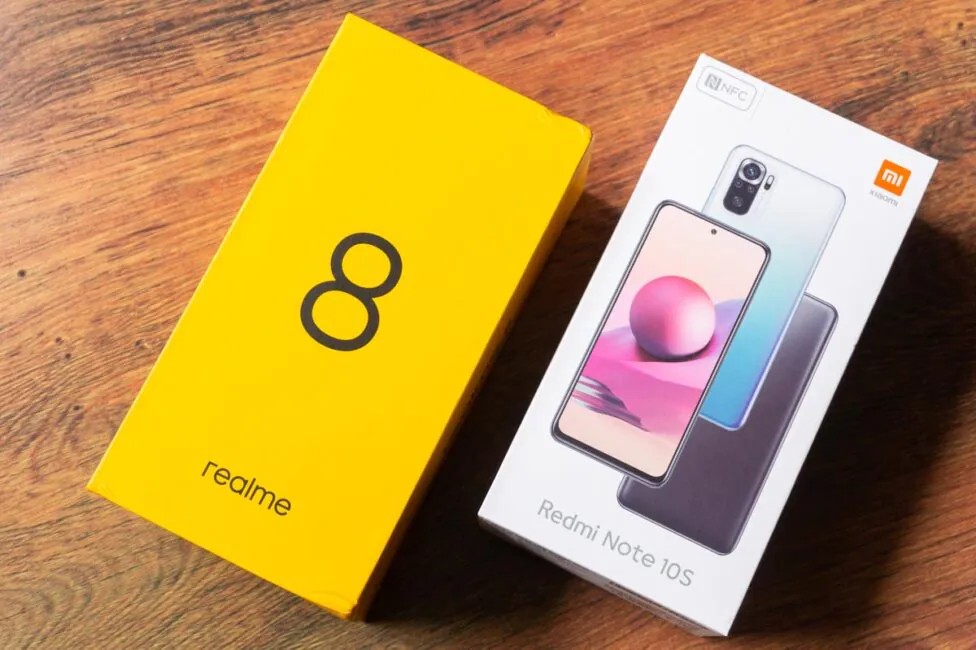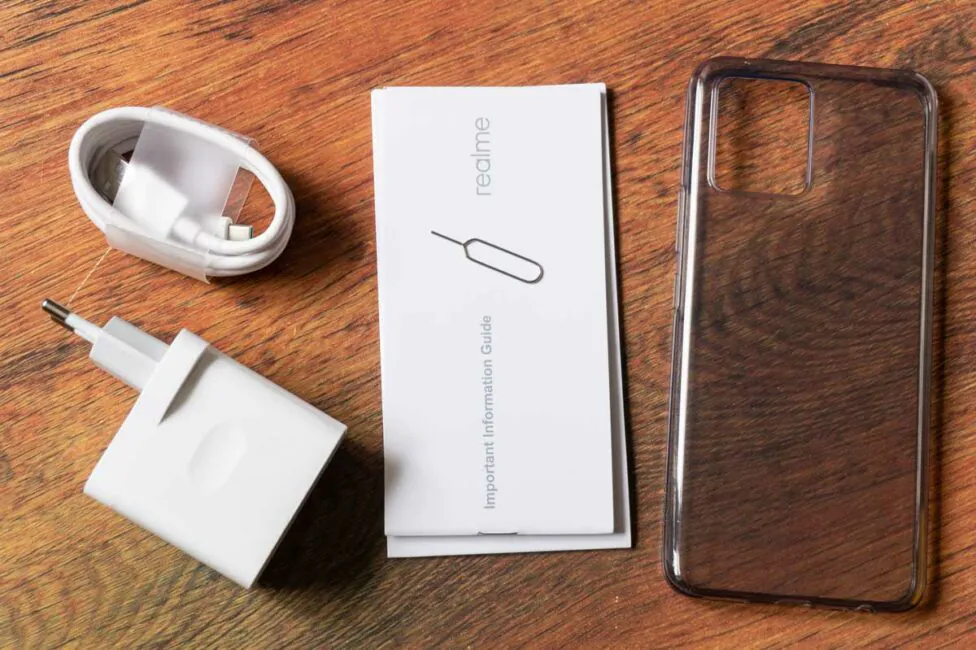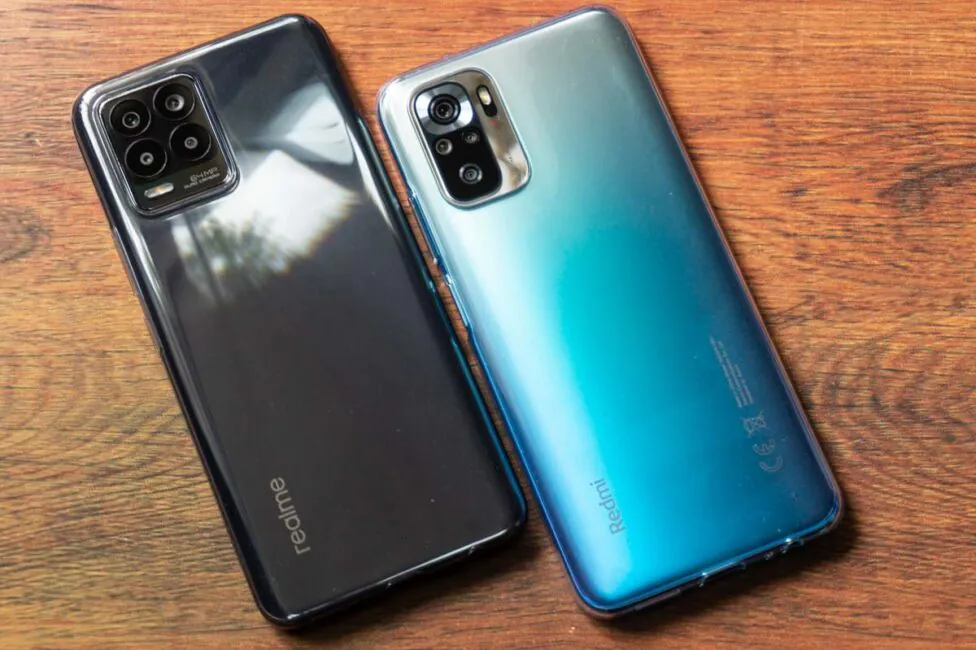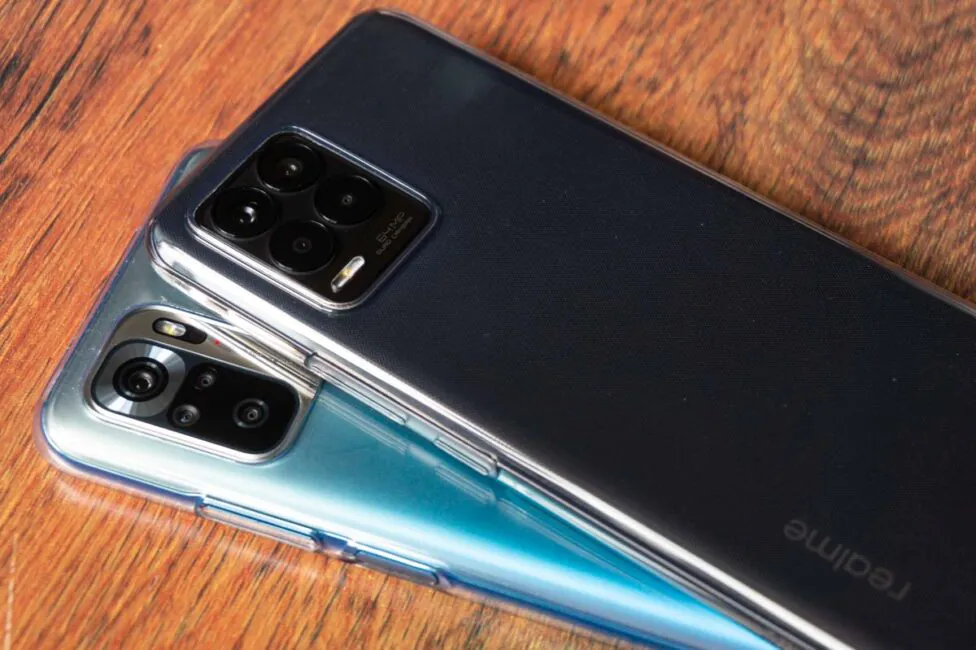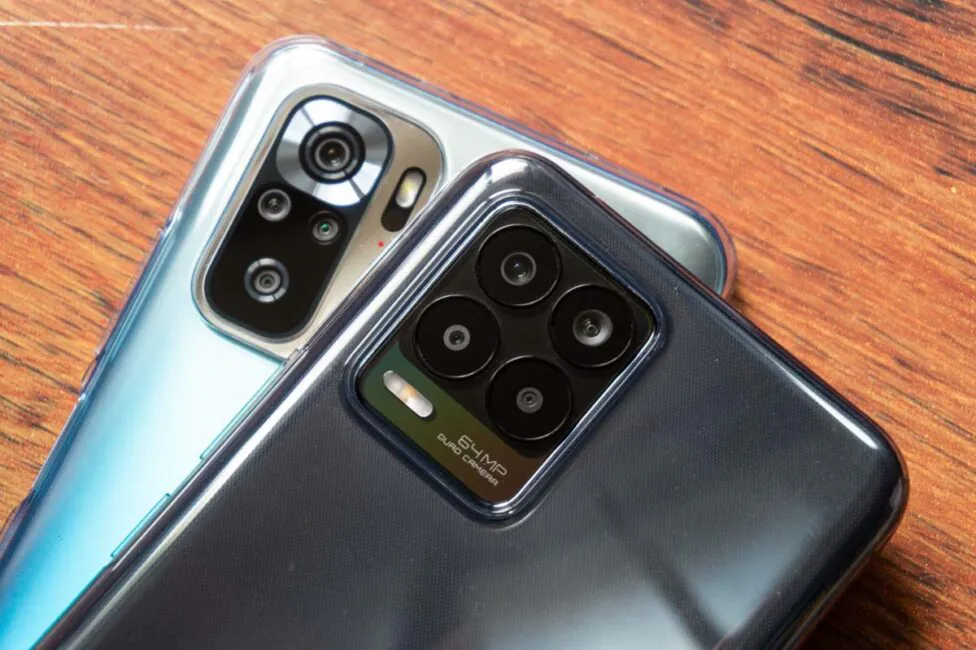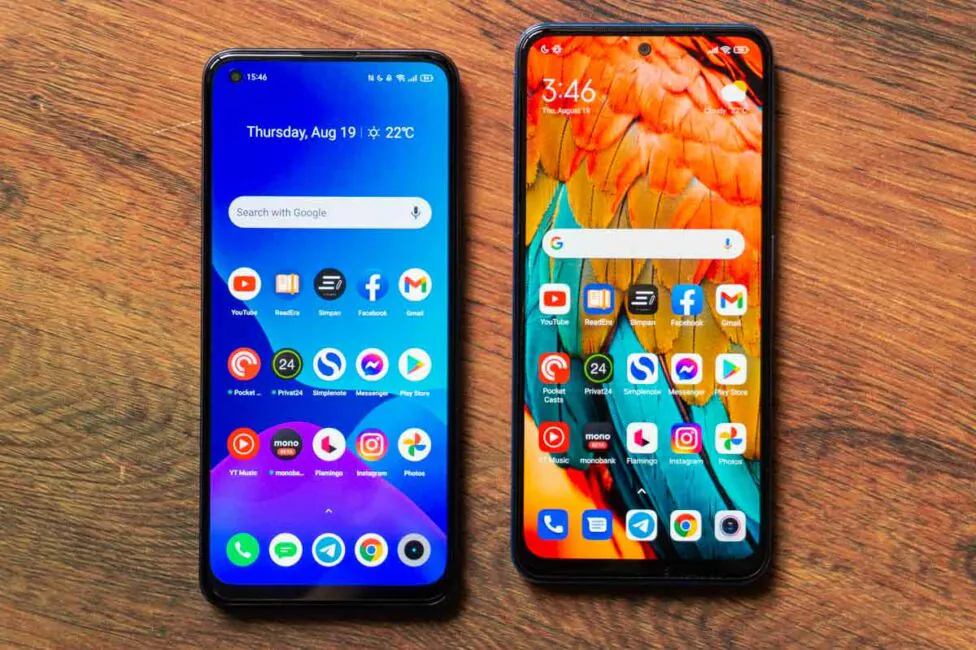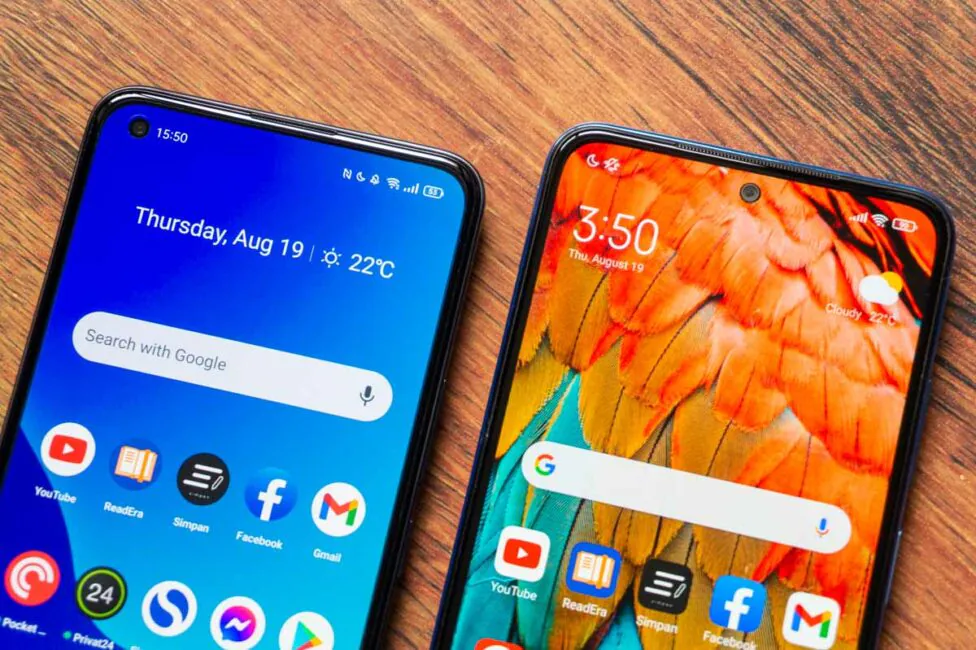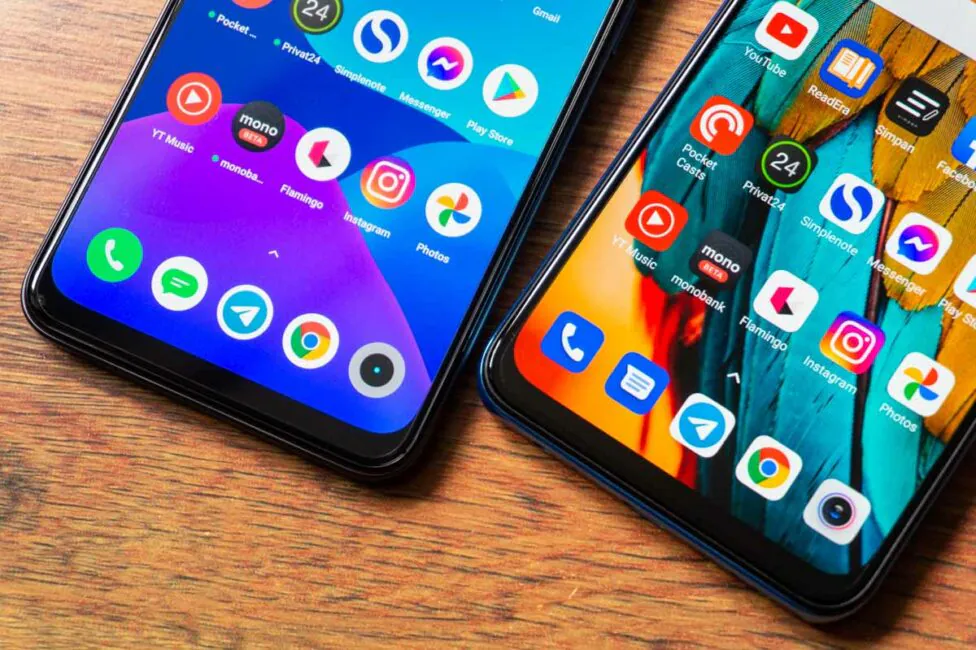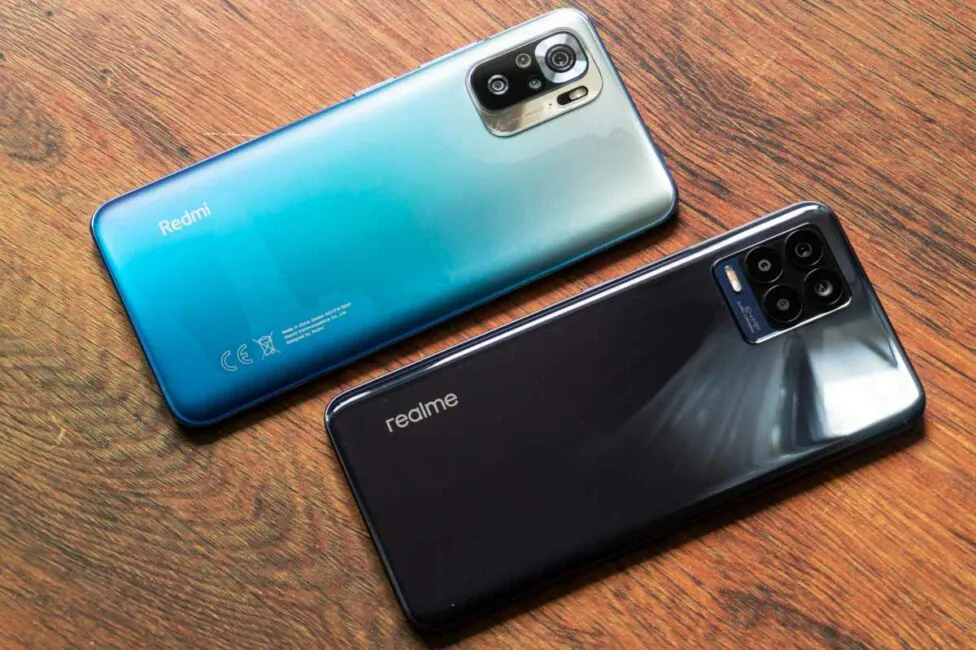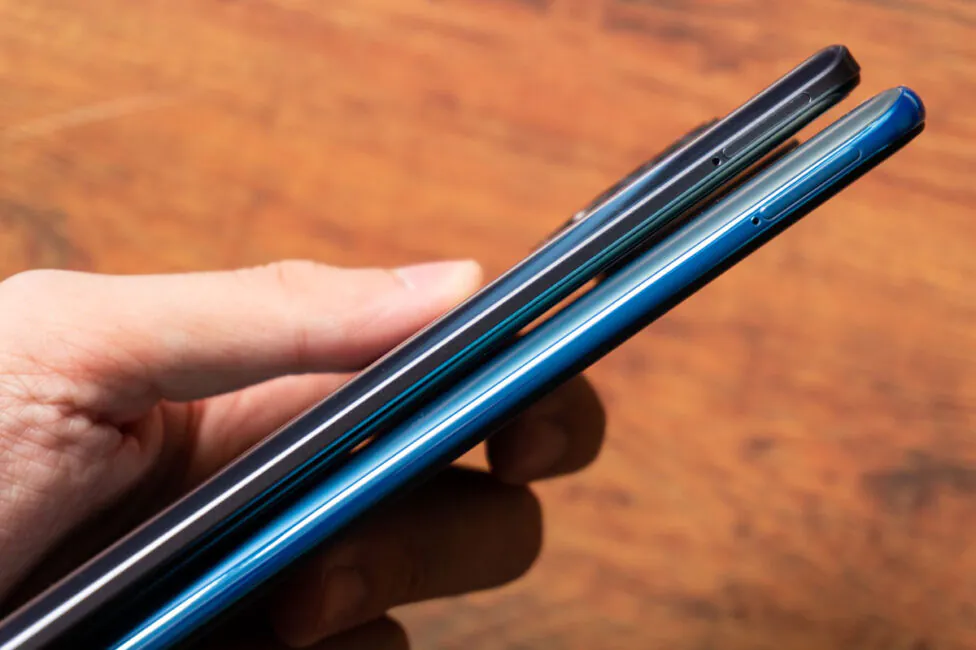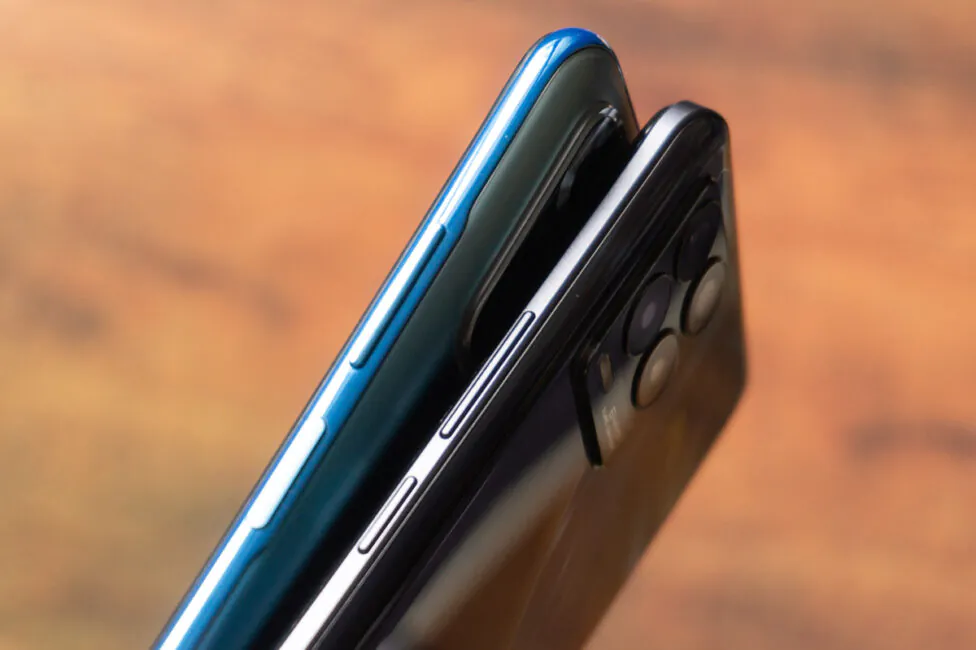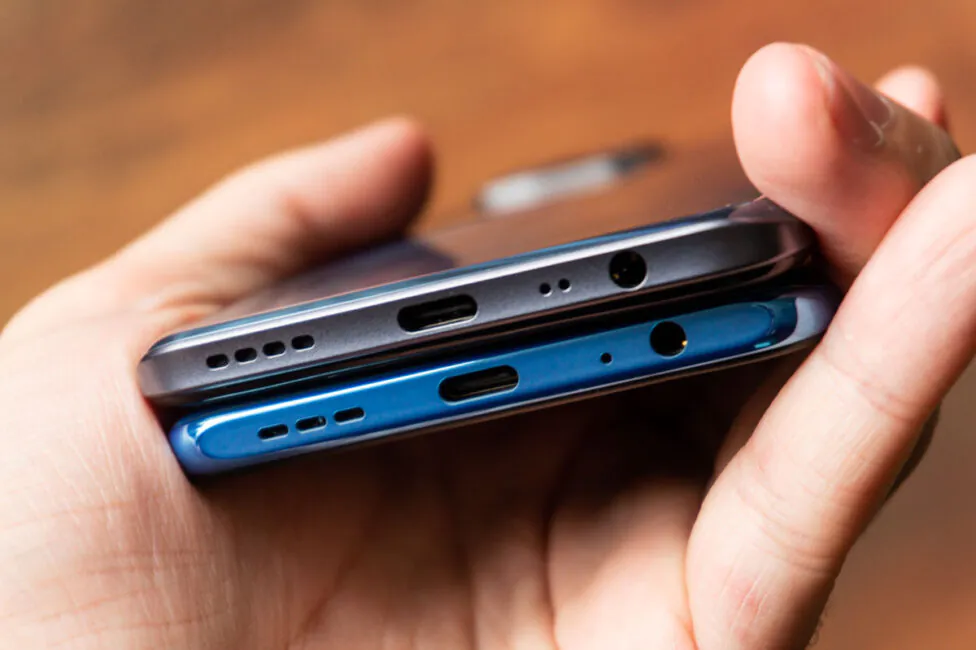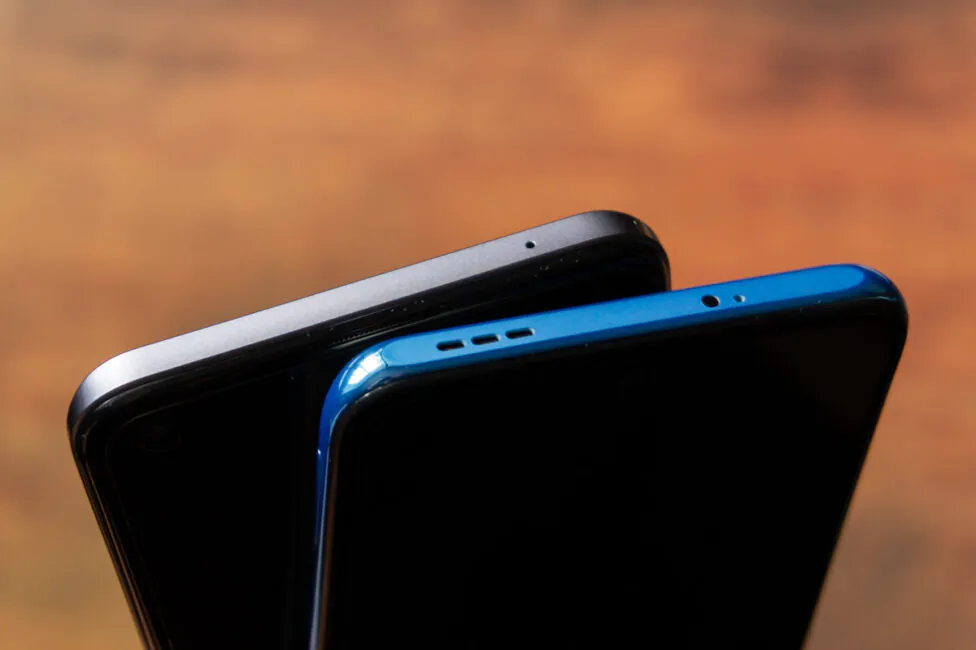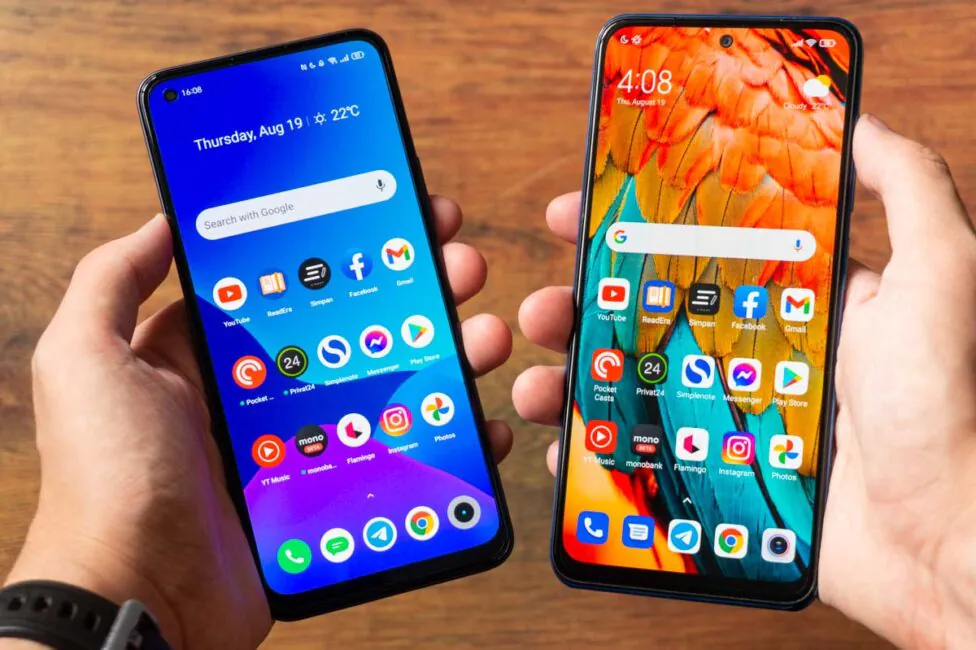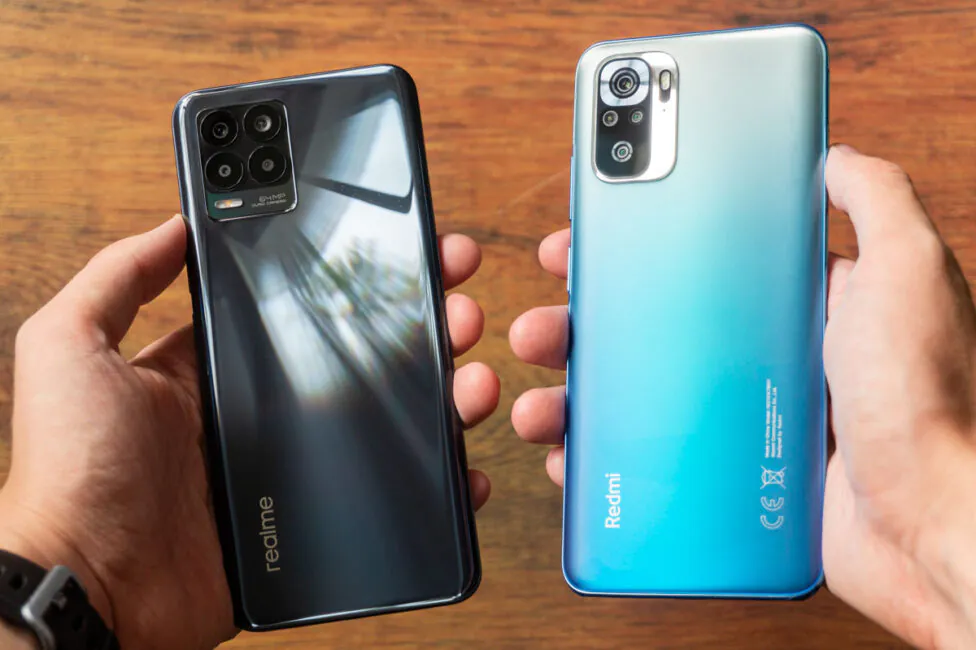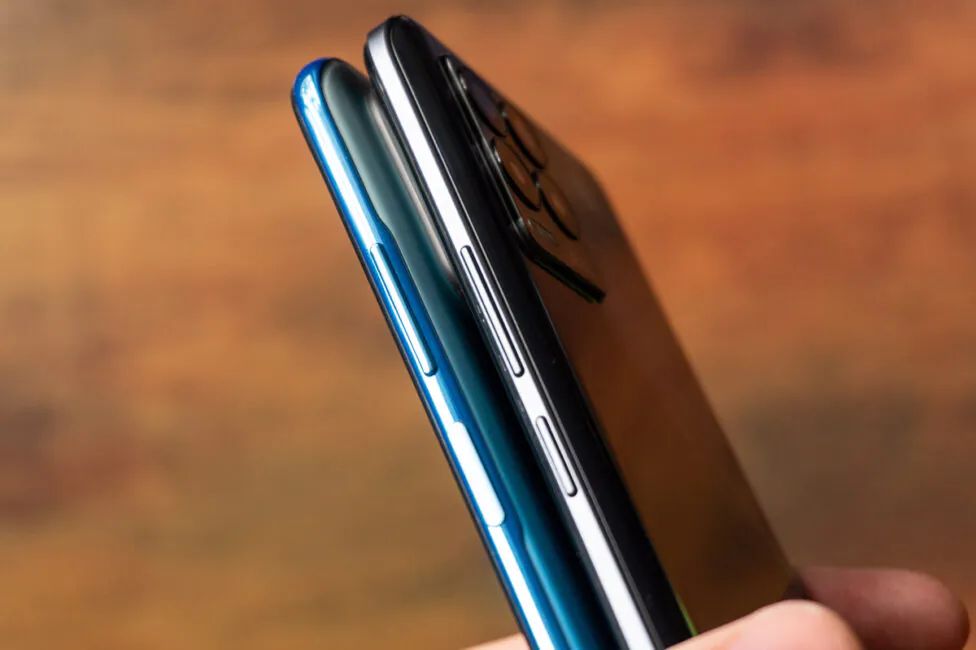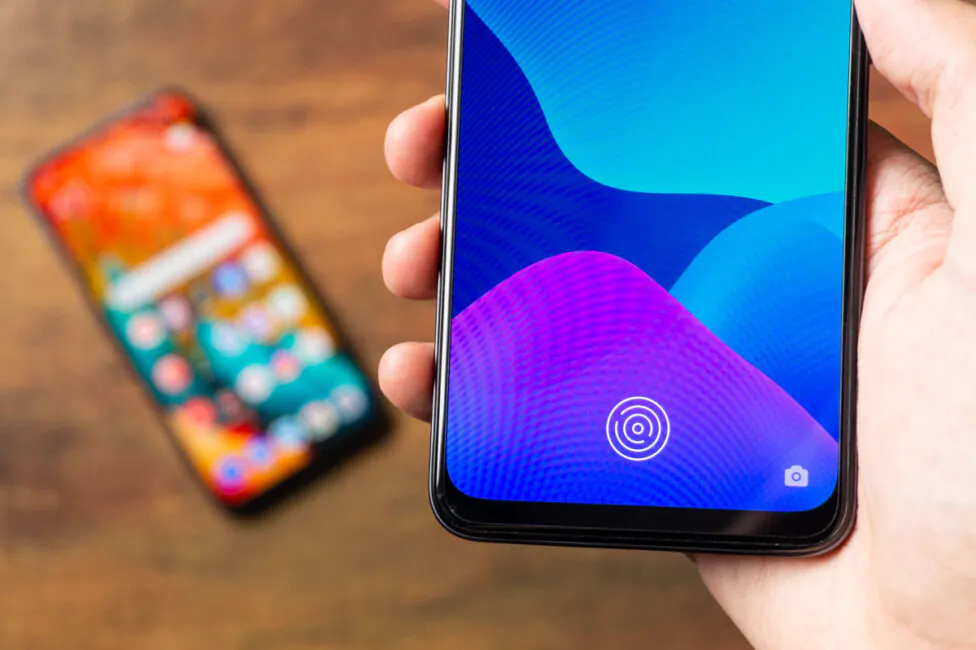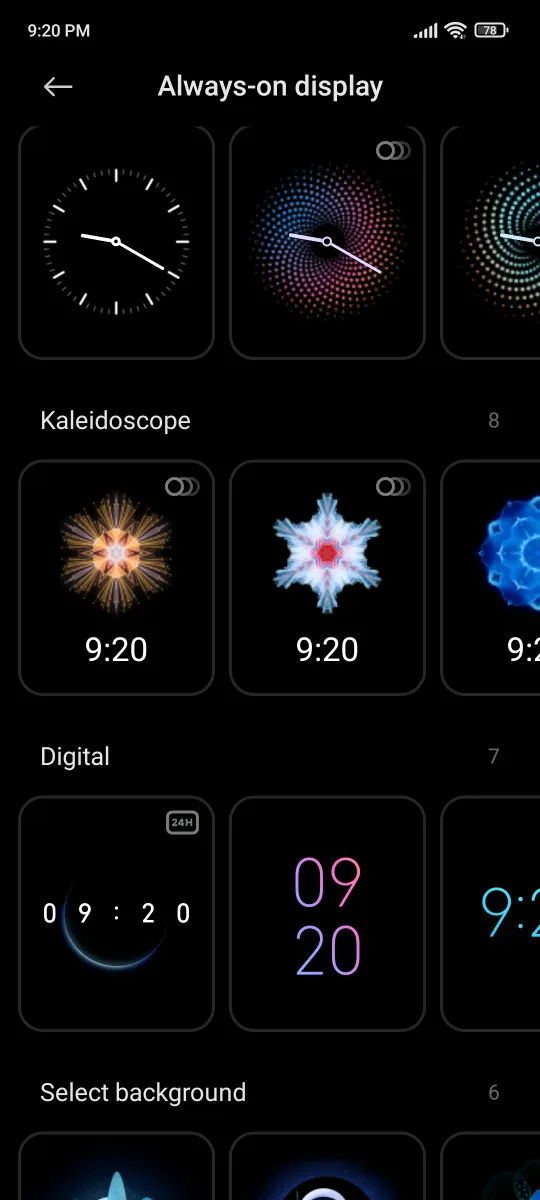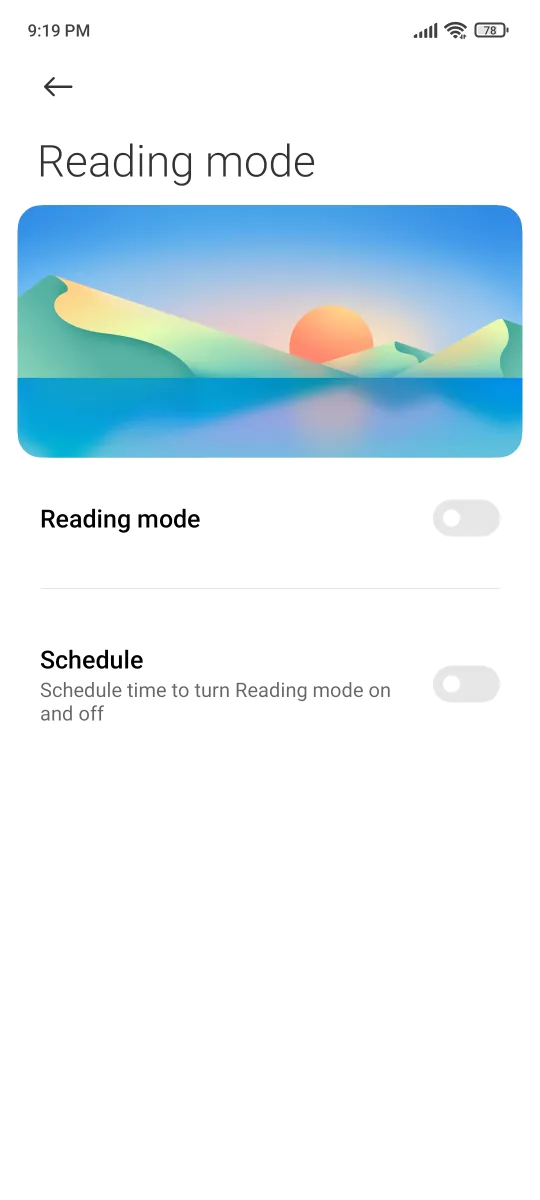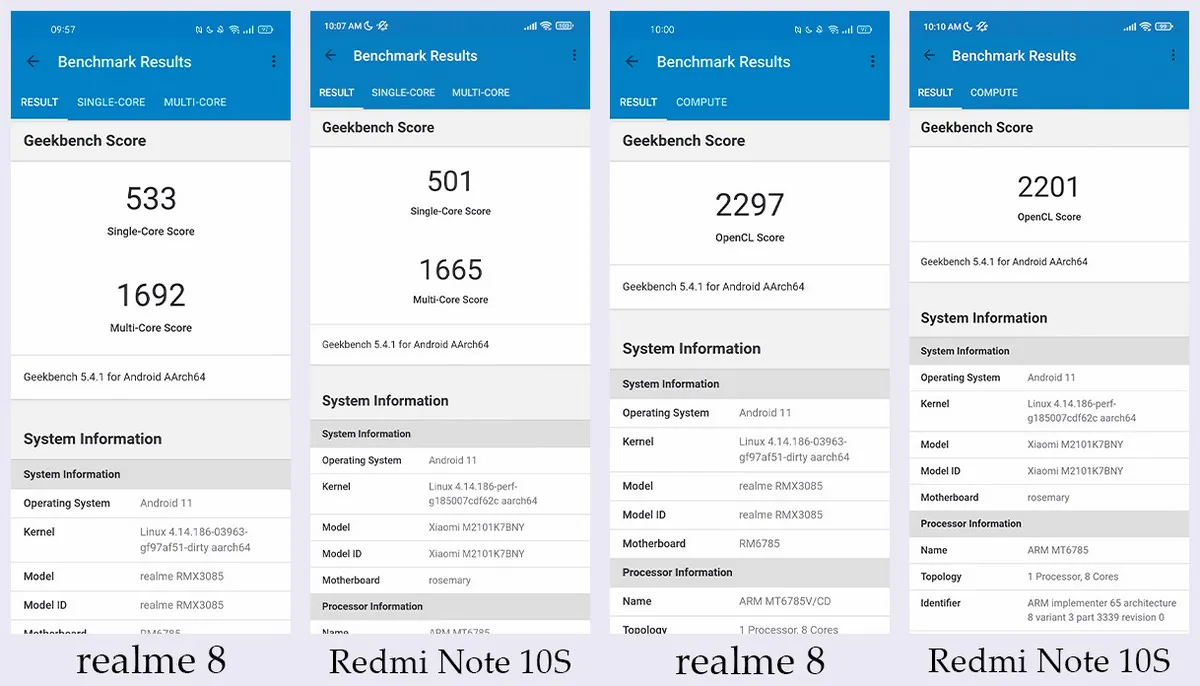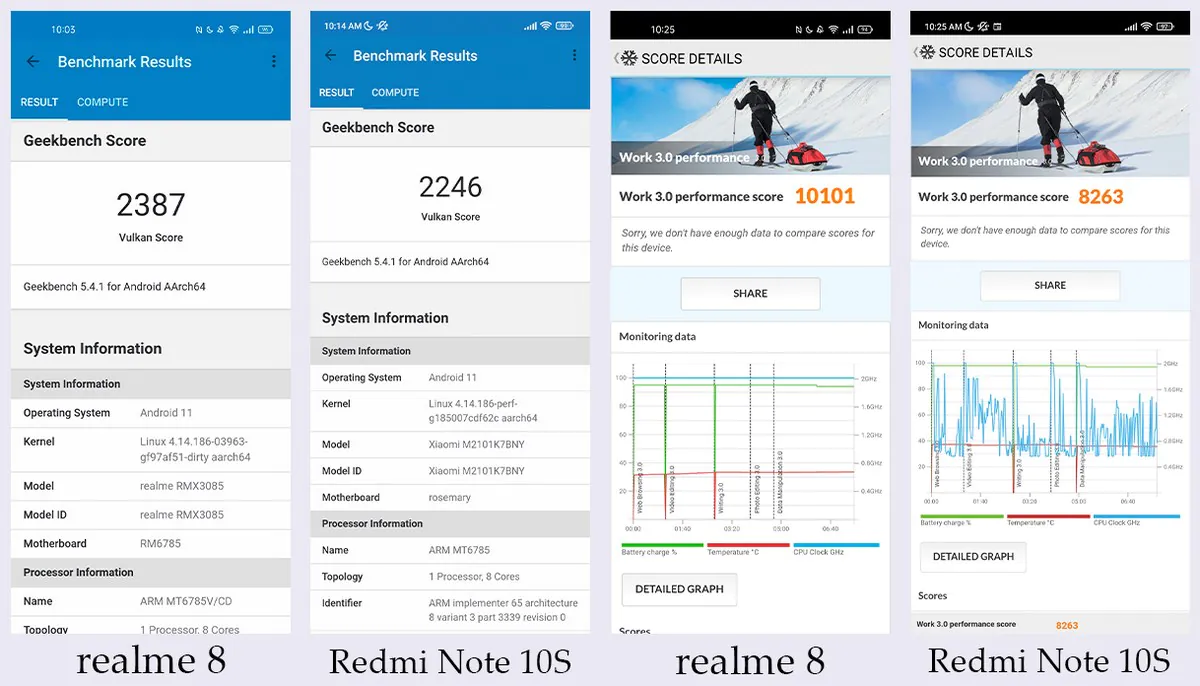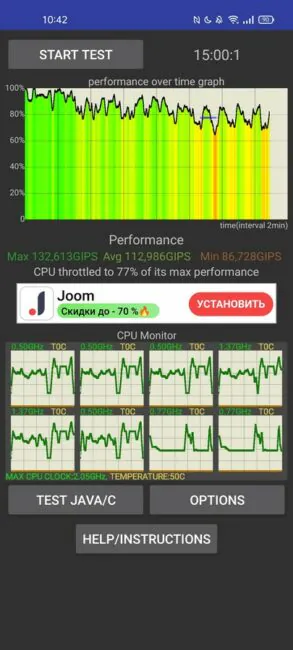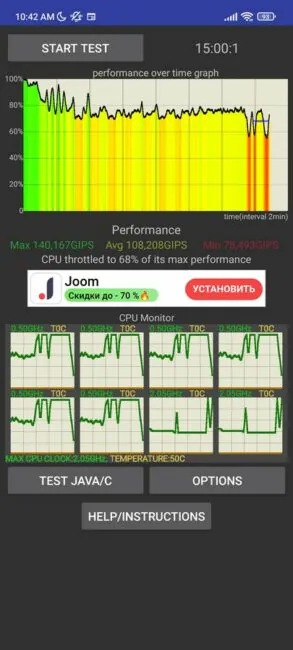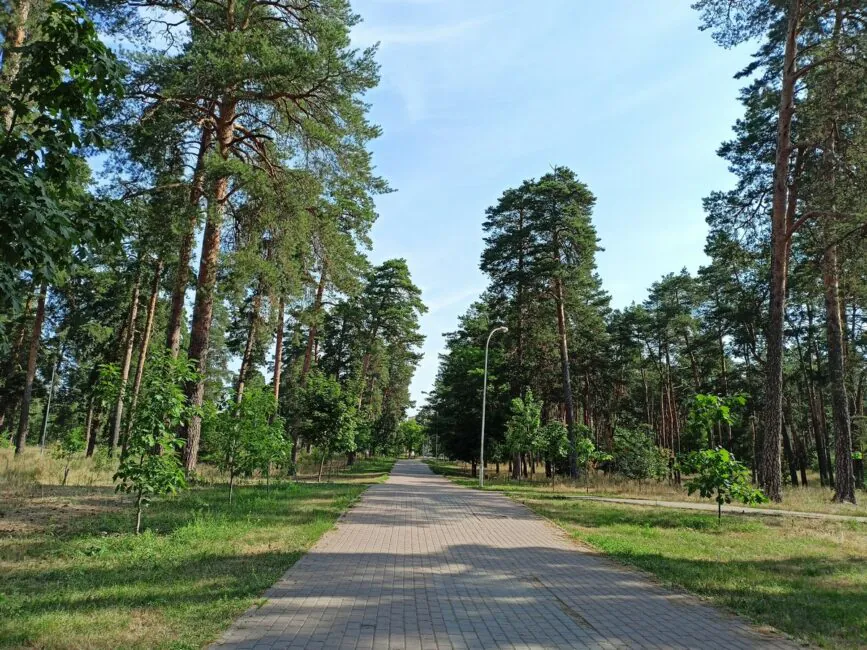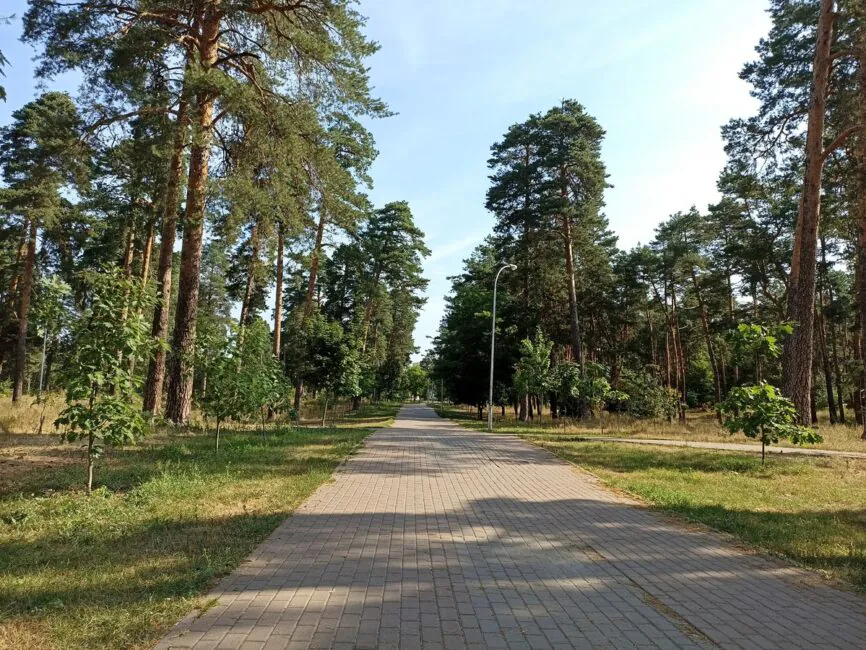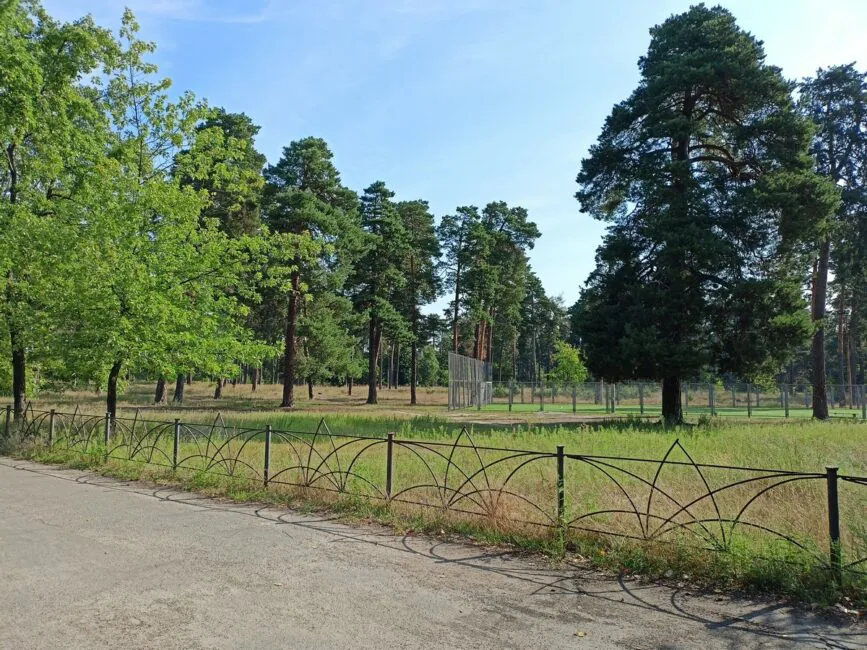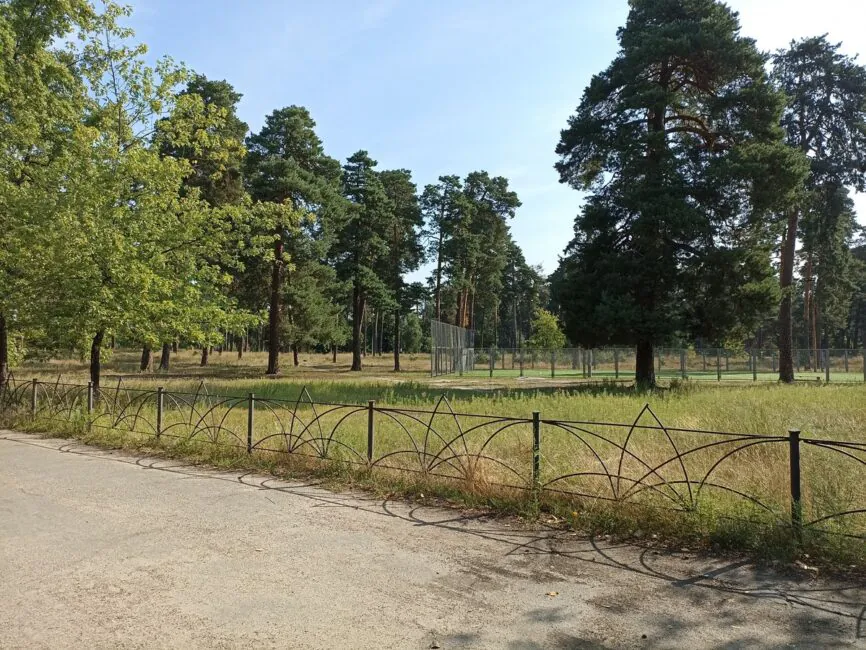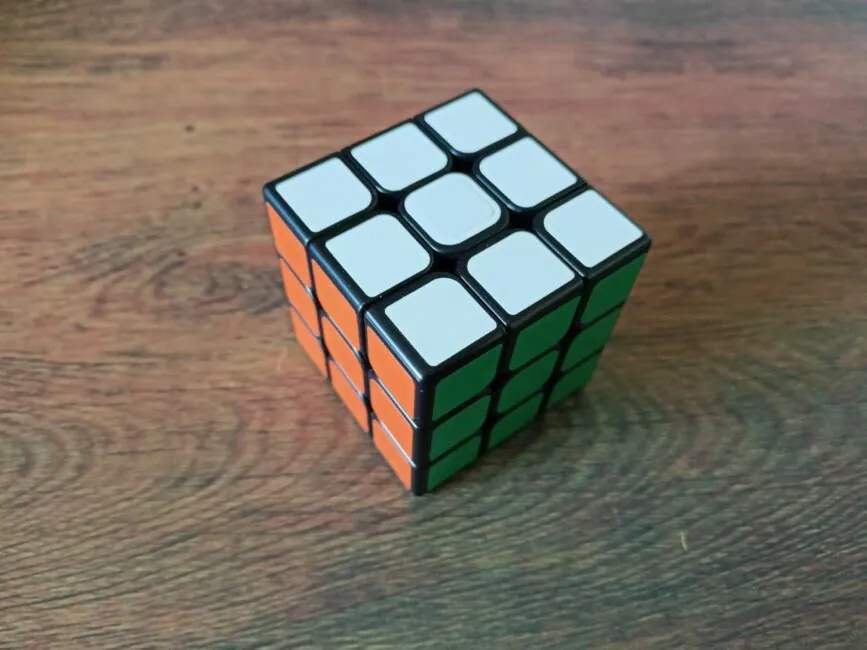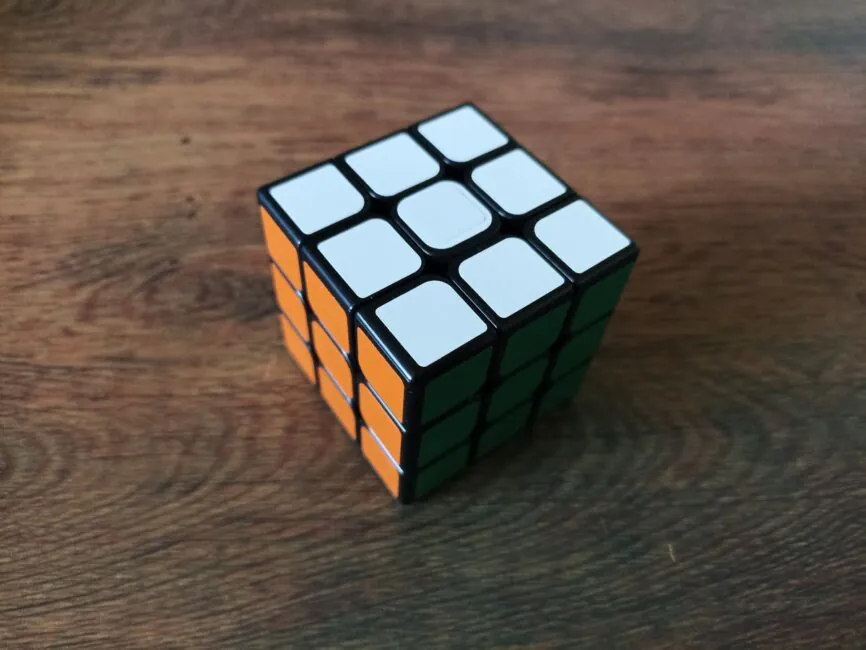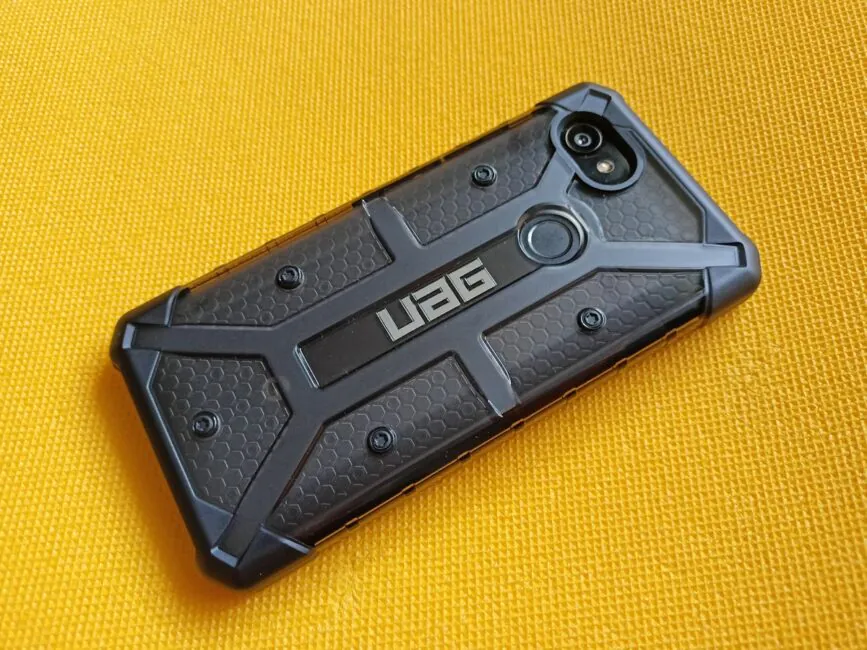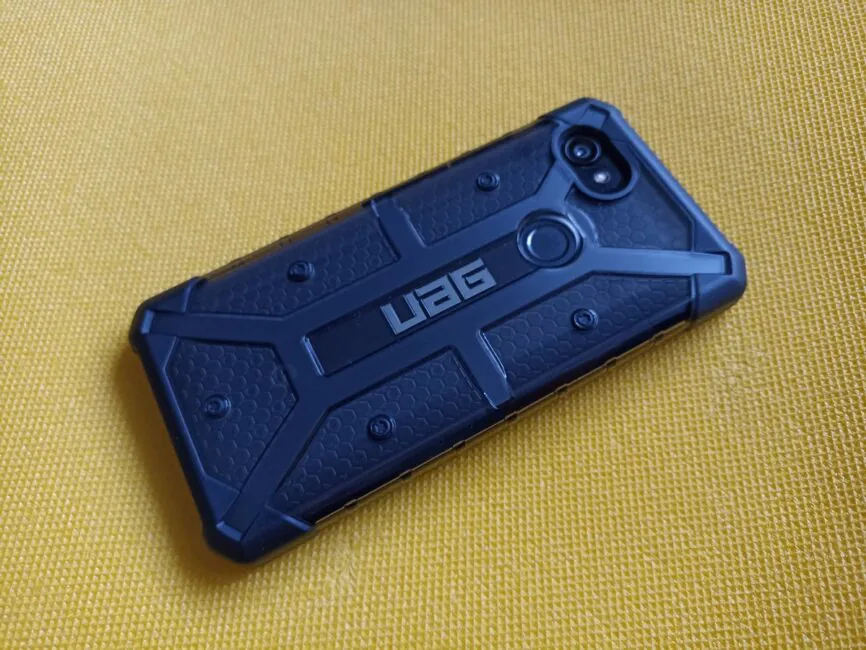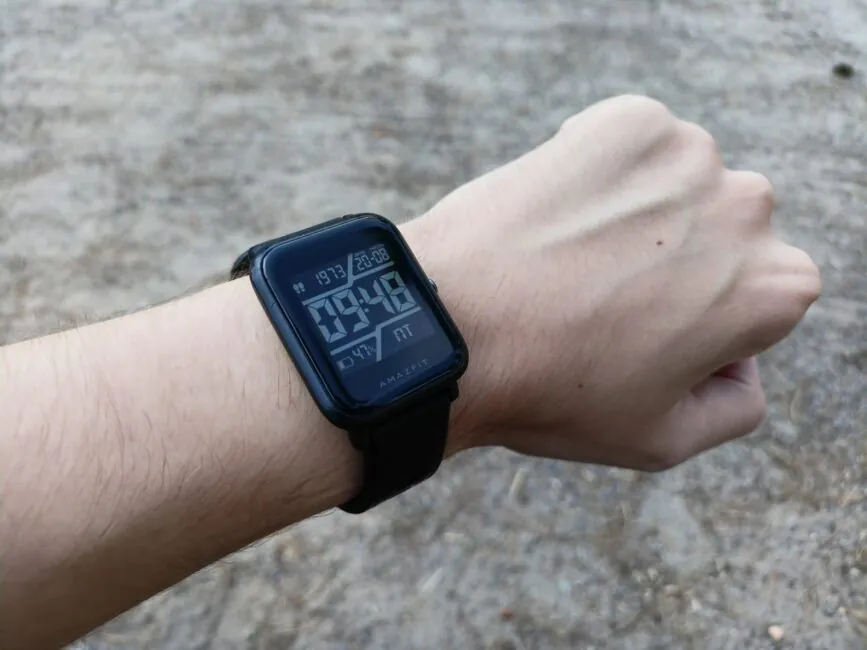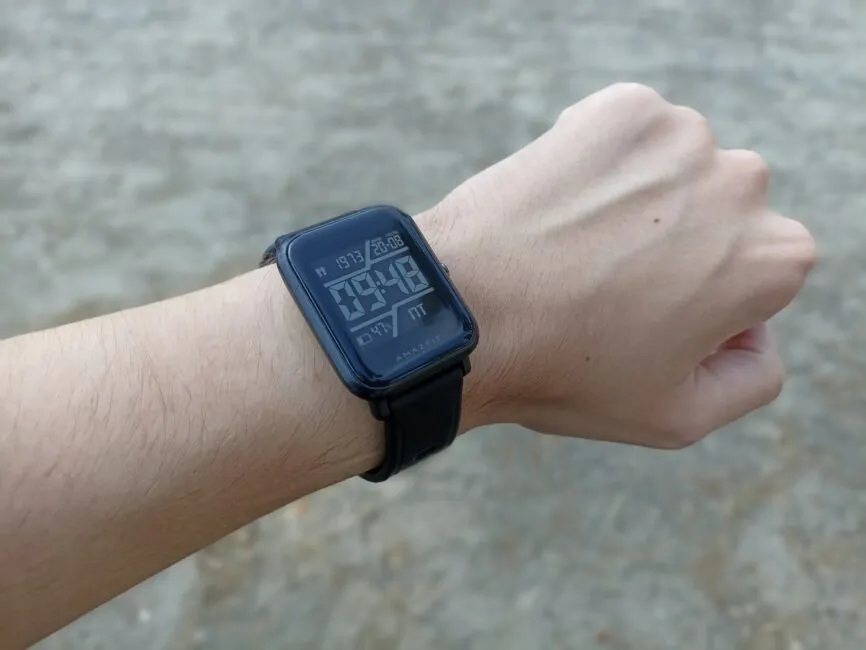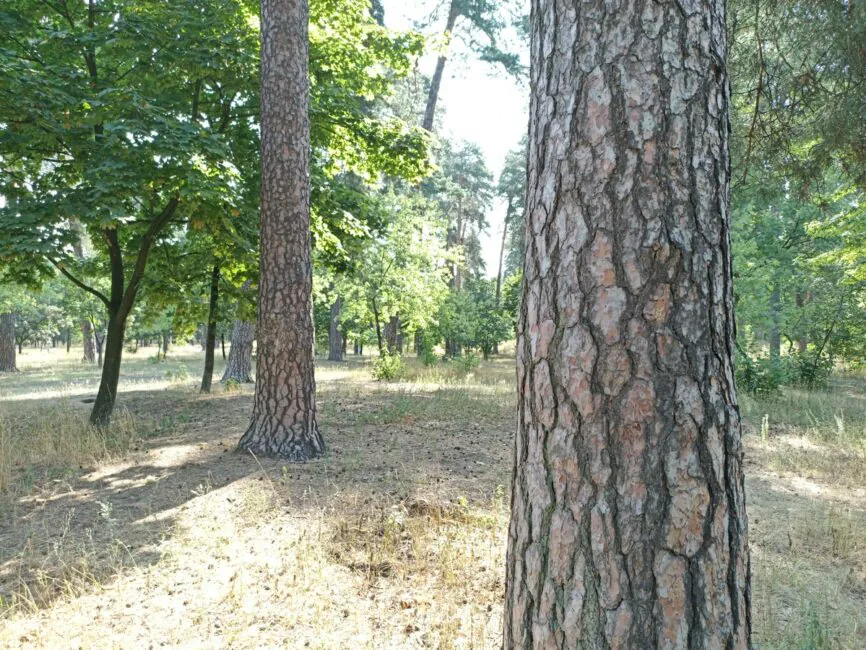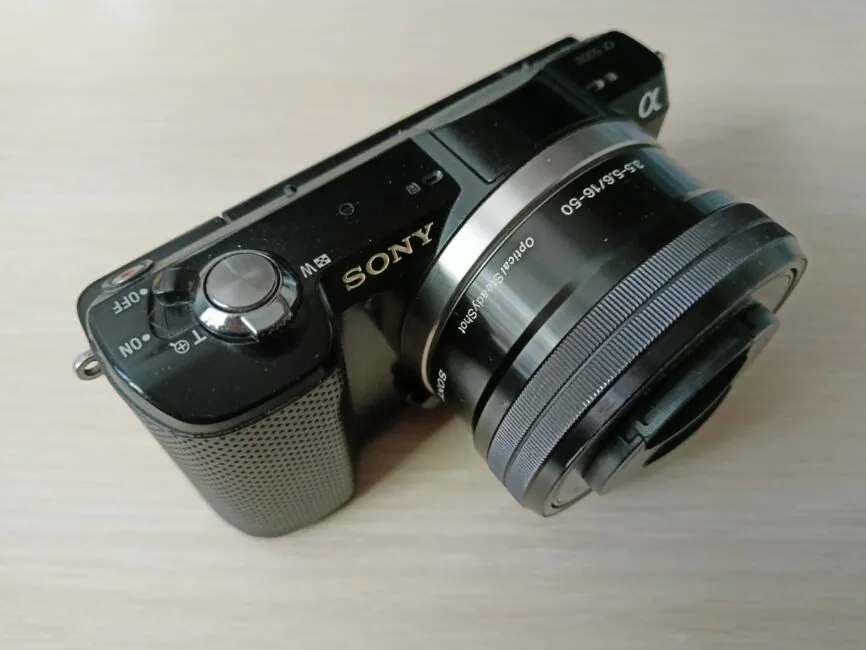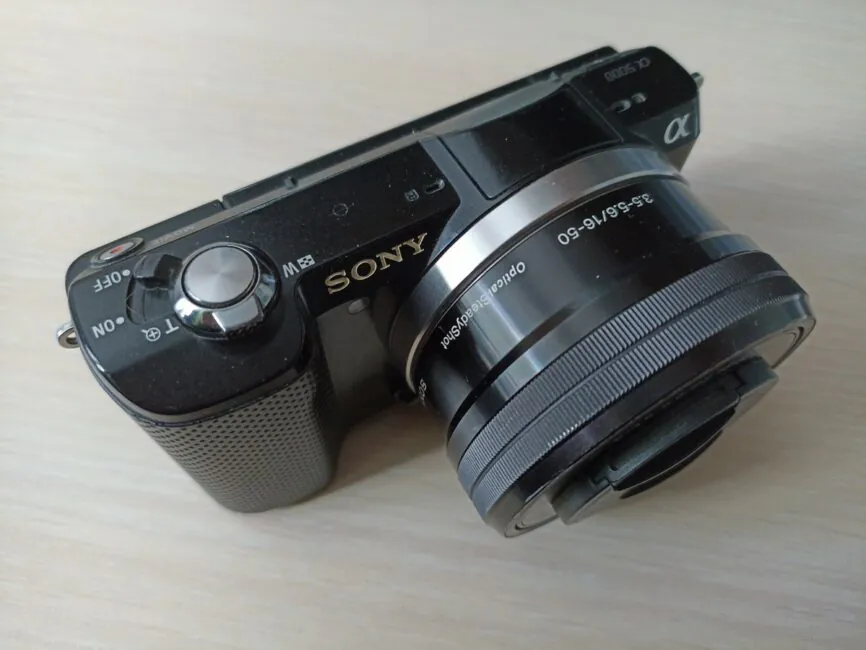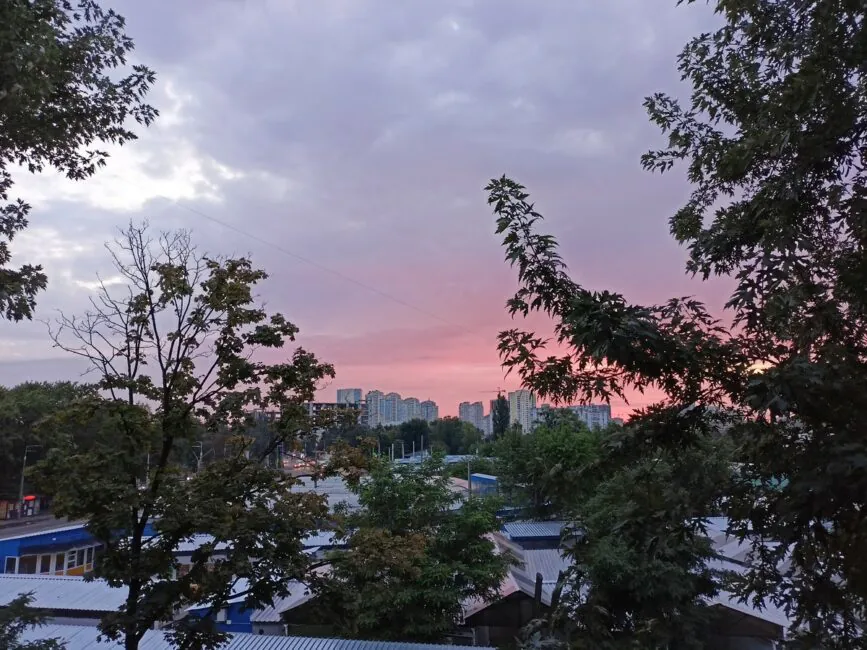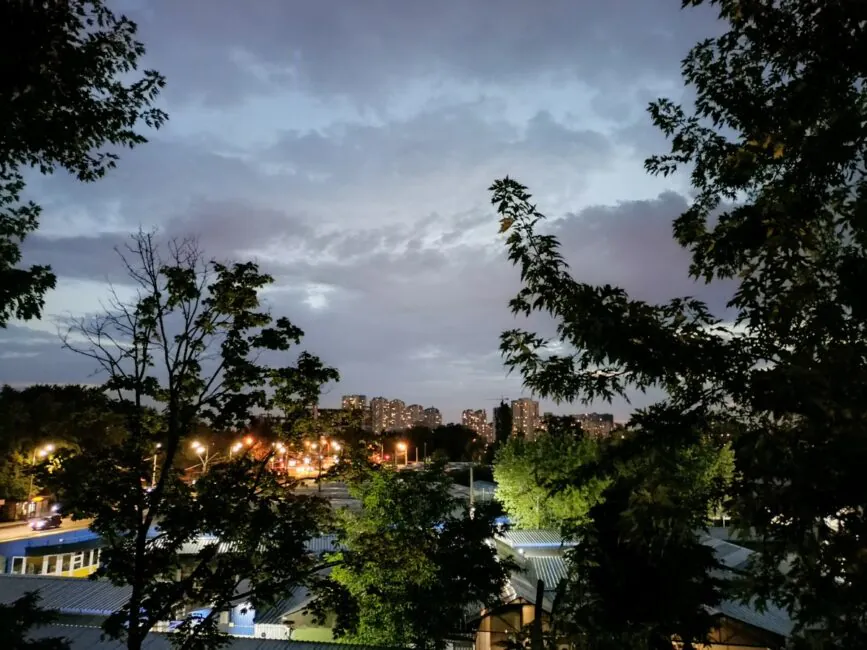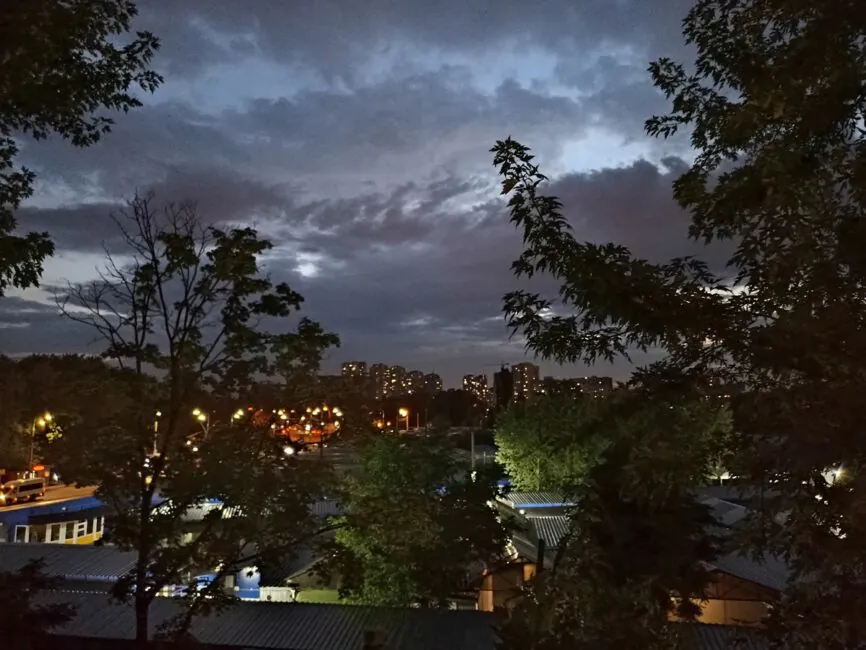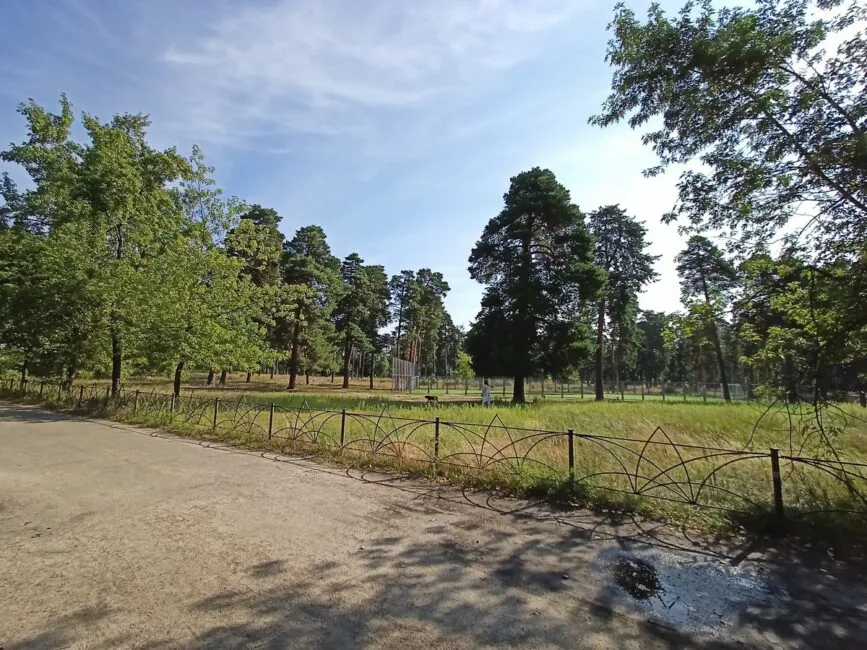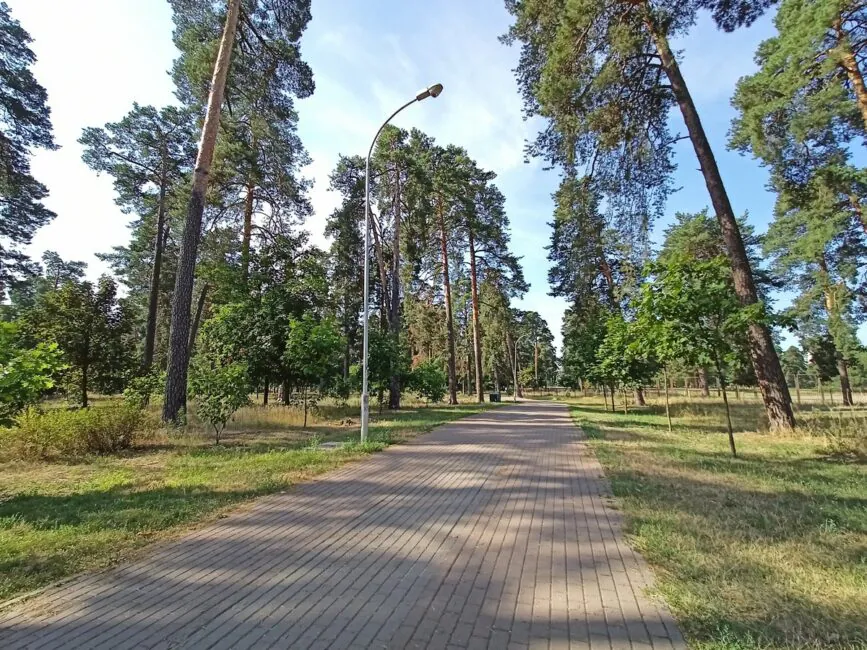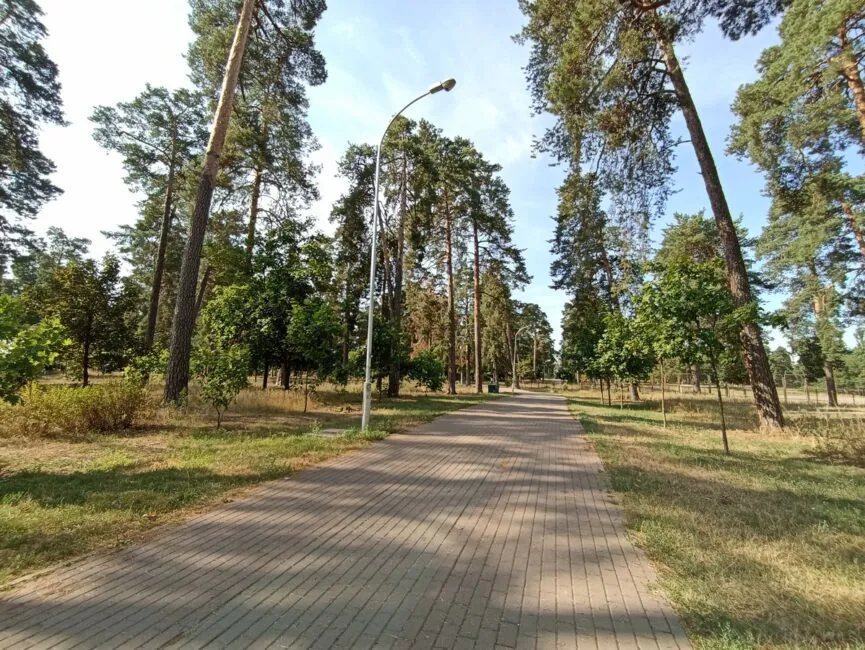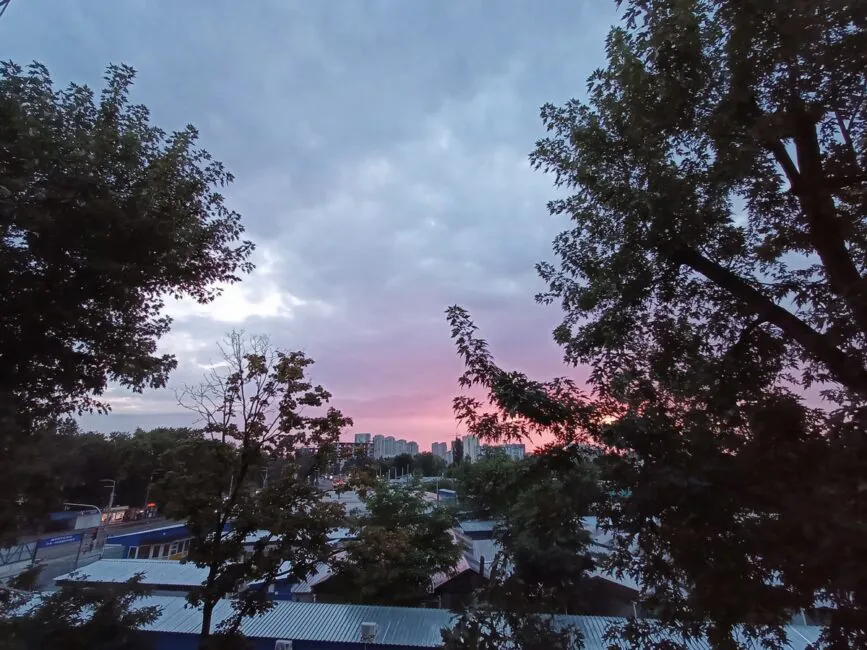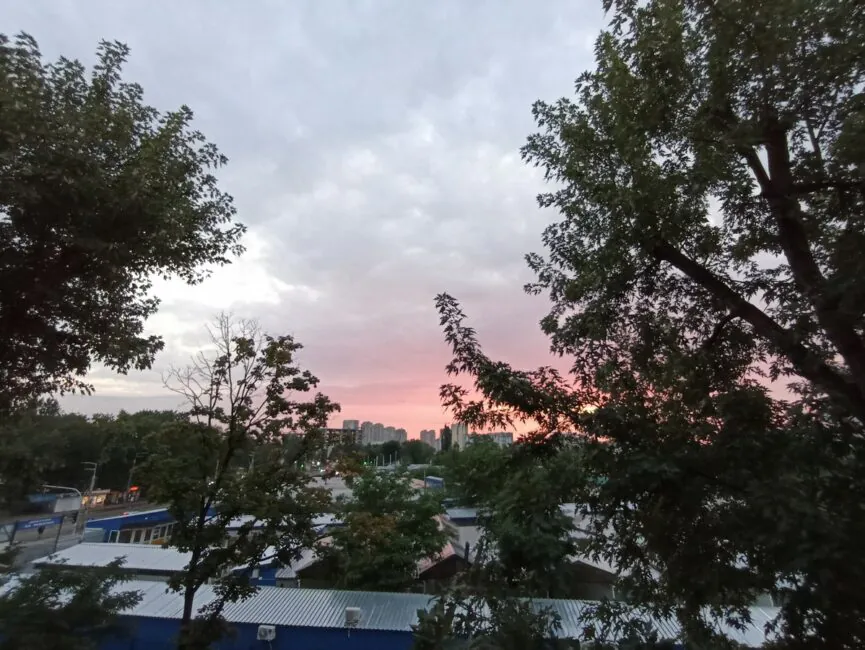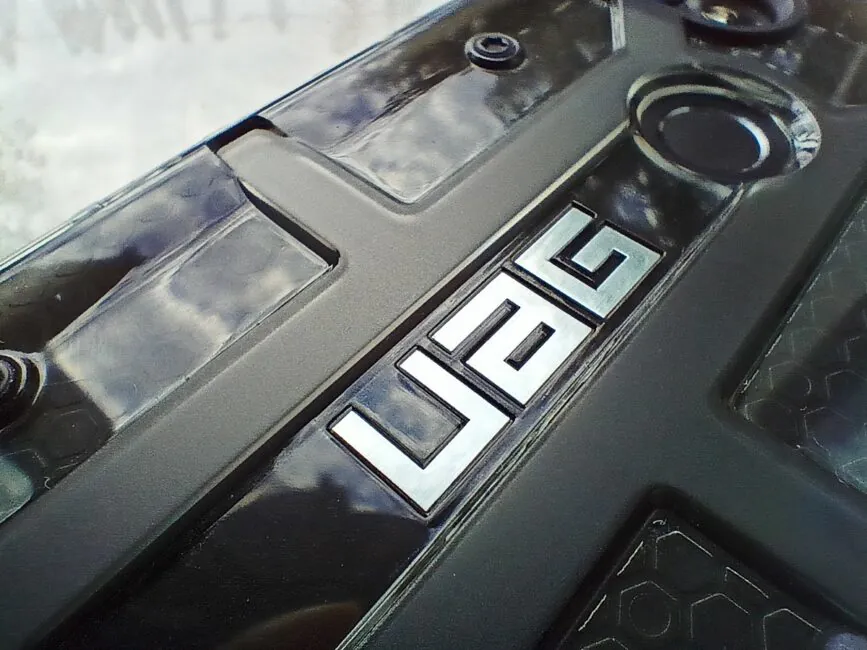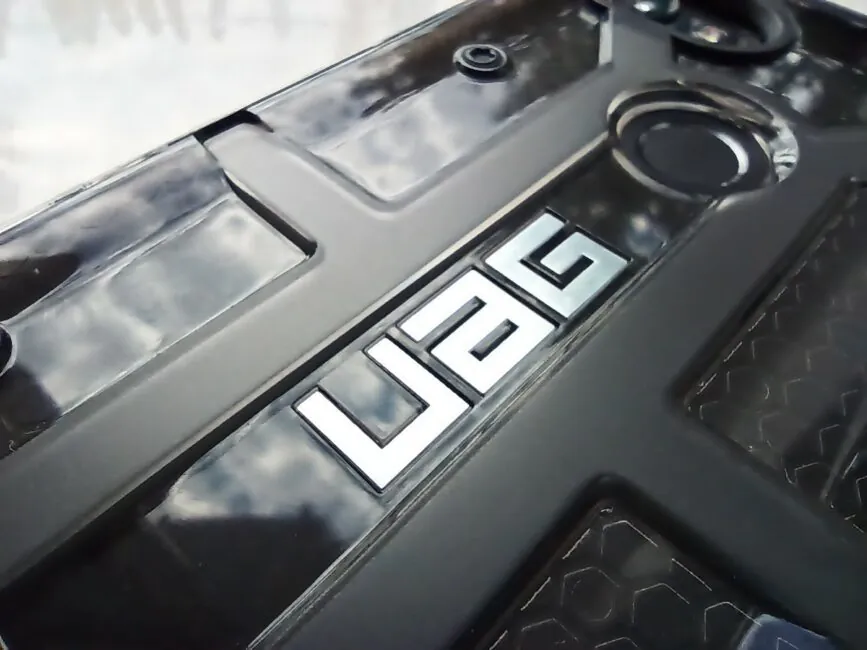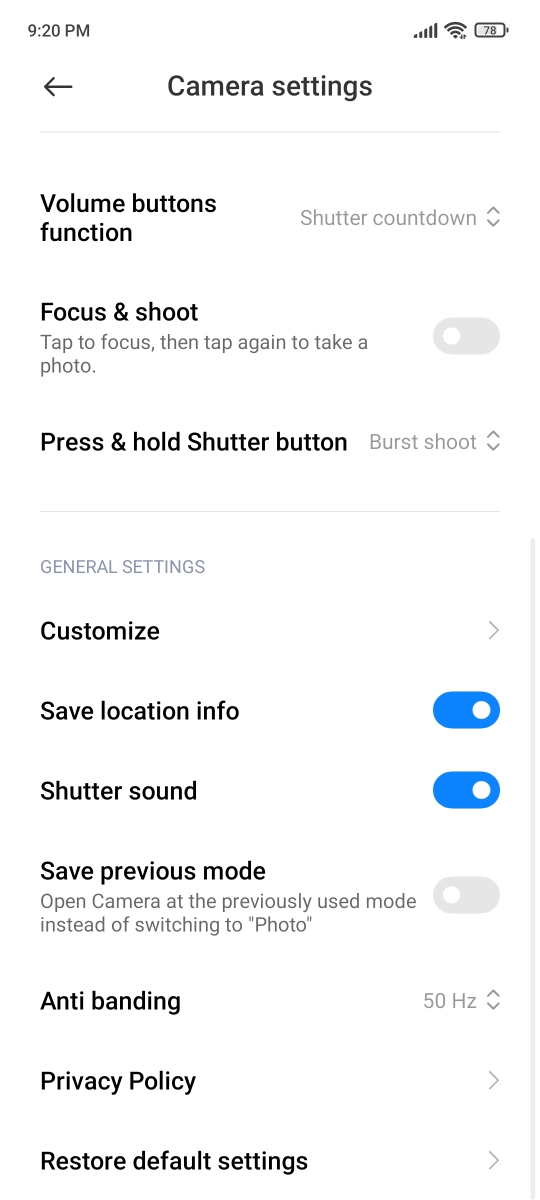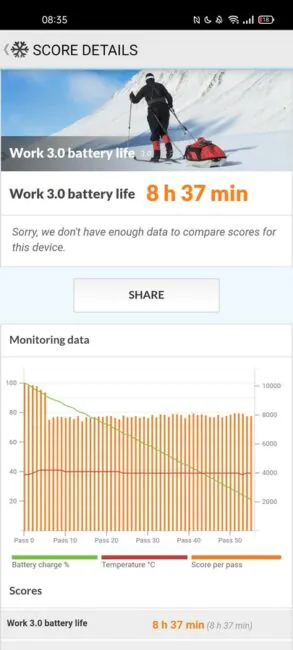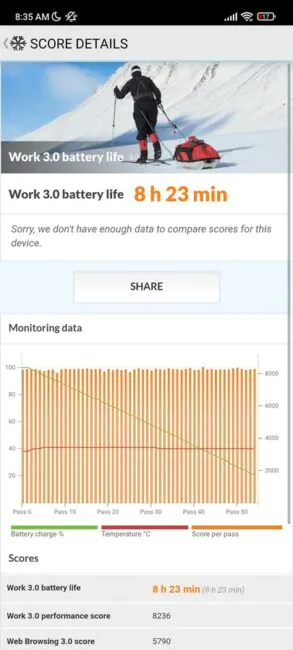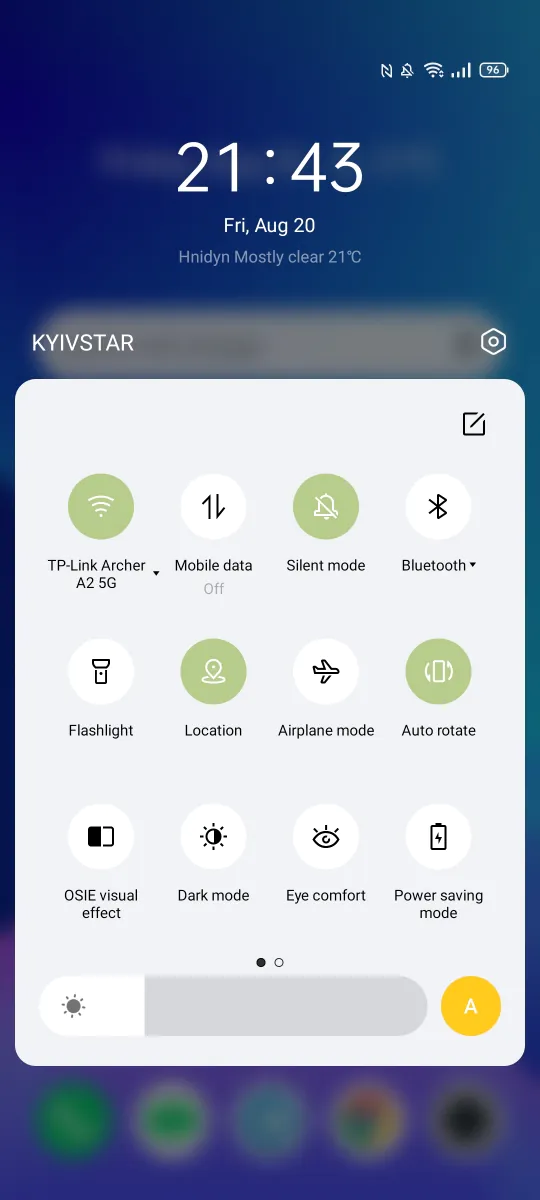© ROOT-NATION.com - Use of content is permitted with a backlink.
Not so long ago, we compared in great detail two potential mid-range hits: the realme 8 Pro and the Redmi Note 10 Pro. In some places they are similar, somewhere they differ dramatically. In today’s material, we will compare the realme 8 and the Redmi Note 10S. They can be considered the smaller brothers of the previously mentioned mid-rangers. Let’s find out what each manufacturer can offer in a more affordable segment.
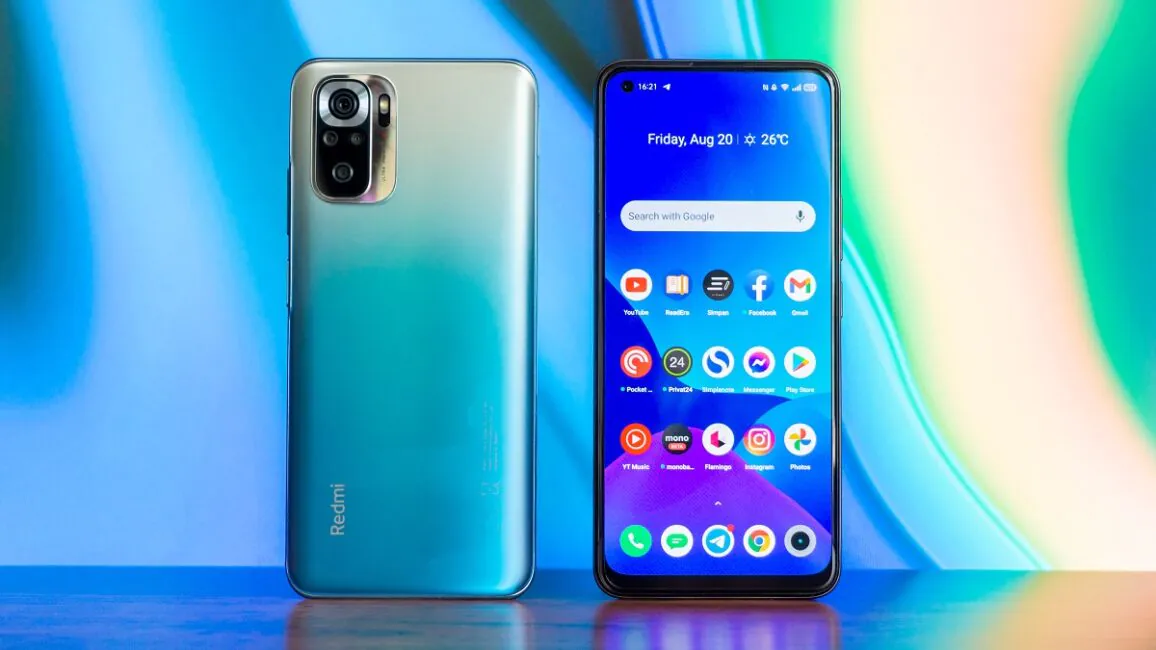
Full specifications of the realme 8 and the Redmi Note 10S
| Smart phone | realme 8 | Redmi Note 10S |
| Display | 6.4′′, Super AMOLED, 2400×1080 pixels, 20:9 aspect ratio, 411 ppi, 1000 nits, 60 Hz, HDR10 | 6.43′′, AMOLED, 2400×1080 pixels, 20:9 aspect ratio, 409 ppi, 1100 nits, 60 Hz |
| Chipset | Mediatek Helio G95, 12 nm, 8-core, Cortex-A76 2×2.05 GHz and Cortex-A55 6×2.0 GHz | Mediatek Helio G95, 12 nm, 8-core, Cortex-A76 2×2.05 GHz and Cortex-A55 6×2.0 GHz |
| Graphics accelerator | Mali-G76 MC4 | Mali-G76 MC4 |
| Ram | 4/6/8 GB, LPDDR4X | 4/6/8 GB, LPDDR4X |
| Storage | 64/128 GB, UFS 2.1 | 64/128 GB, UFS 2.2 |
| Memory card support | microSD up to 256 GB | microSD up to 256 GB |
| Wireless modules | Wi-Fi 5, Bluetooth 5.1 (A2DP, LE), GPS (A-GPS), GLONASS, BDS, NFC | Wi-Fi 5, Bluetooth 5.1 (A2DP, LE), GPS (A-GPS), GLONASS, BDS, GALILEO, NFC, IR port |
| Main camera | wide-angle module 64 MP, f/1.8, 1/1.73′′, 0.8μm, PDAF; ultra-wide-angle module 8 MP, f/2.3, 119 ̊, 1/4.0′′, 1.12μm; macro 2 MP, f/2.4; depth sensor 2 MP, f/2.4 | wide-angle module 64 MP, f/1.8, 1/1.97′′, 0.7μm, PDAF; ultra-wide-angle module 8 MP, f/2.2, 118 ̊, 1/4.0′′, 1.12μm; macro 2 MP, f/2.4; depth sensor 2 MP, f/2.4 |
| Front-facing camera | 16 MP, f/2.5, 1/3.0′′, 1.0μm | 13 MP, f/2.5, 1/3.06′′, 1.12μm |
| Battery | 5000 mAh | 5000 mAh |
| Fast charging | 30 W | 33 W |
| FA | Android 11 with realme UI 2.0 shell | Android 11 with MIUI 12.5 shell |
| Dimensions | 160.6×73.9×8.0 mm | 160.5×74.5×8.3 mm |
| Mass | 177 g | 178.8 g |
Smartphone modifications and cost
As always, both manufacturers try to offer many modifications of smartphones with different memory. This means that demanding users have a choice, and there’s also some basic options available at a better price for those who do not need excess gigabytes. There are four different configurations of the realme 8 and the Redmi Note 10S smartphones, but not everyone can be officially presented in a particular country.
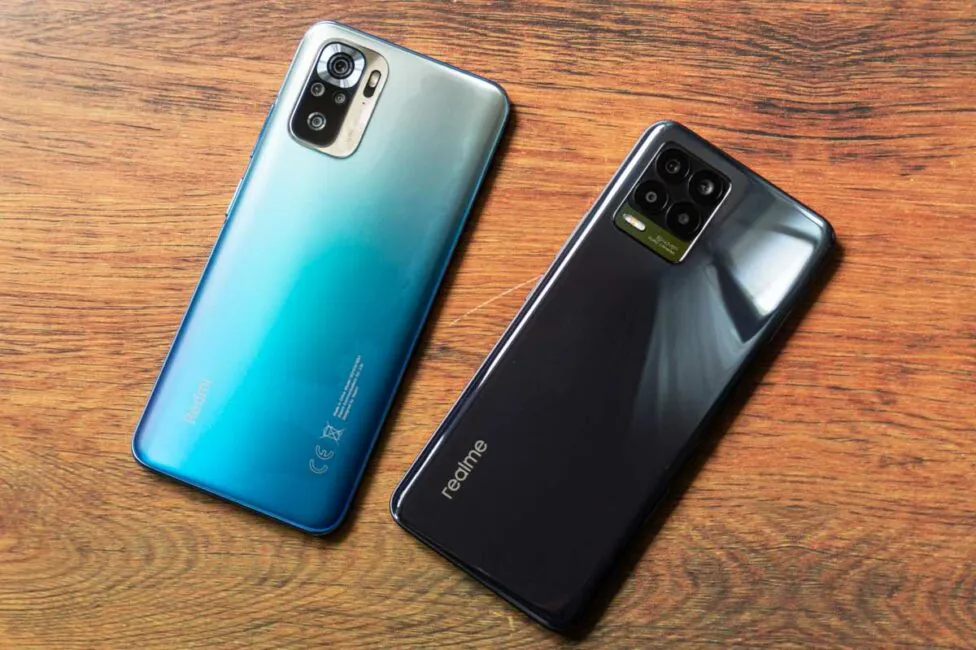
The realme 8 is available in the following editions: 4/64, 4/128, 6/128 and 8/128 GB. In turn, the Redmi Note 10S is available in 4/128, 6/128, 8/128 GB versions and differs from the first smartphone in fact only by the simplest modification, which in this case is version 6/64.
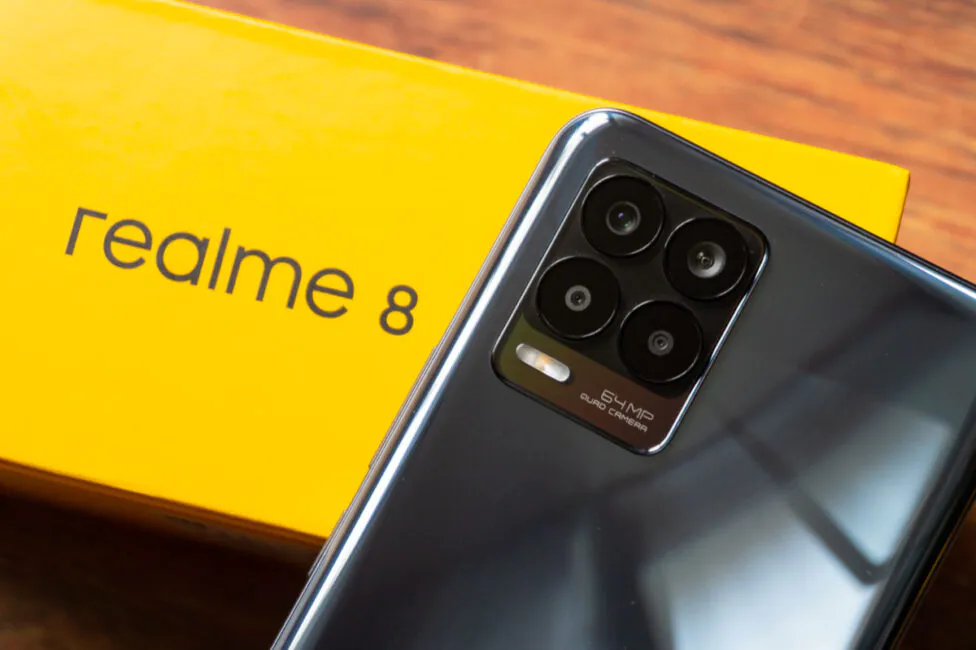
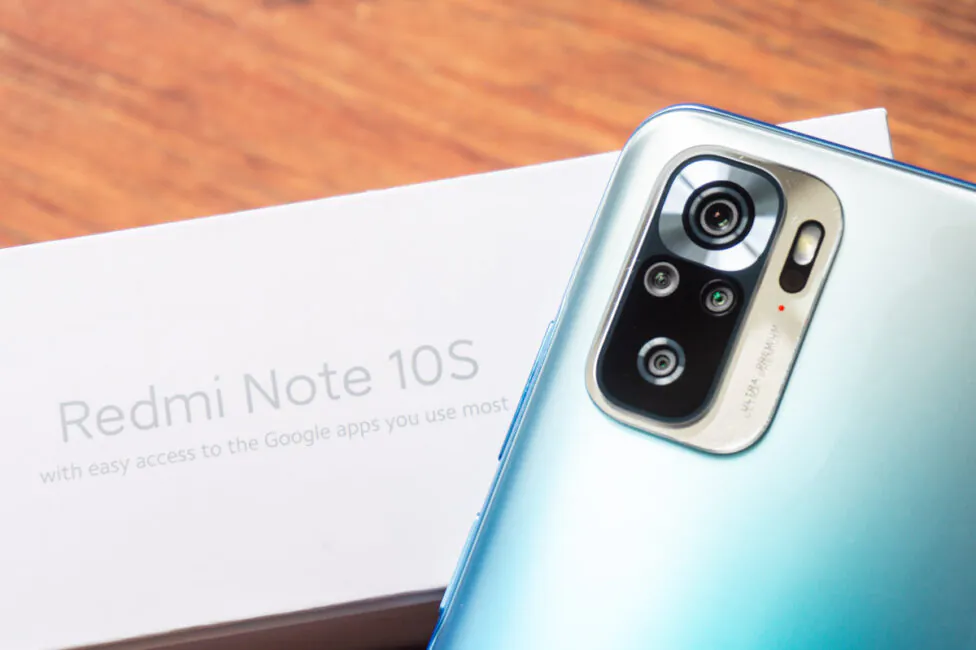
At the time of publication, the 6/128 GB version cost $263.
What’s in the box
The set of smartphones is generally identical, except for some of its components. So both are supplied in cardboard boxes with traditional brand design. Inside, in addition to the devices themselves, there are large power adapters, one meter-long USB/Type-C cables, transparent silicone protective cases, SIM eject tools and various accompanying documentation.
Power adapters are different: the realme has 30 W, and the Redmi offers 33 W. Not as strong a different like there was between the realme 8 Pro and the Redmi Note 10 Pro (65 W vs. 33 W). However, this does not mean that smartphones have the same charge speed. but we will talk about it later.
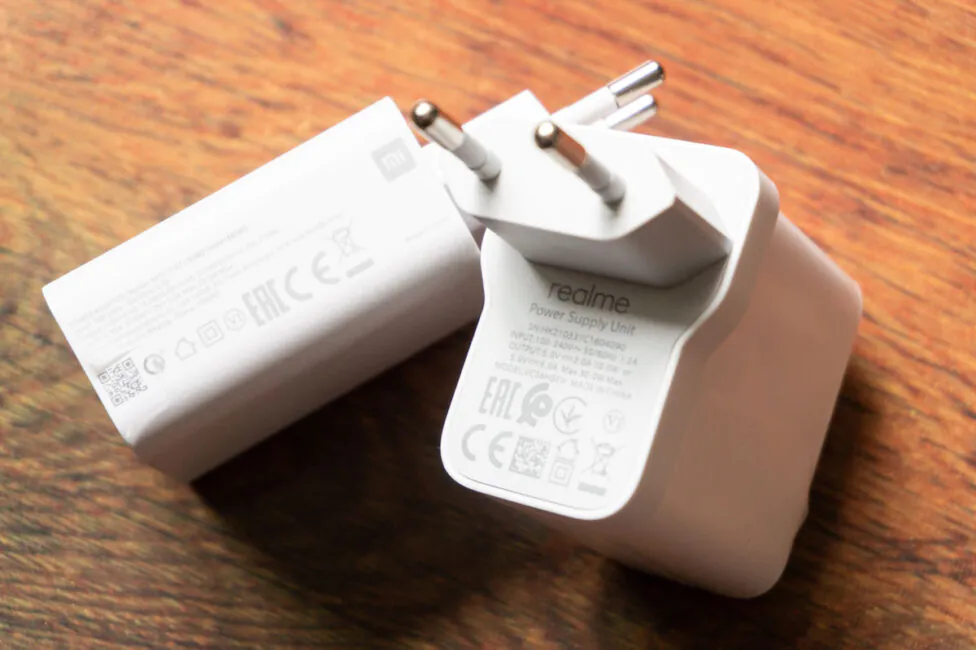
The cases are extremely similar. Simple transparent ones, with duplication of buttons, with all necessary holes and cutouts. Only the main block of cameras is more protected in realme, while the Redmi smartphone case has no bumpers around the cameras. The protective film is also initially glued to the screens of both smartphones.
Read also:
- Realme 8 review: Modern mid-range classic
- Redmi Note 10S review: Affordable smartphone with NFC and Super AMOLED
Design, materials and layout
Both smartphones have a modern up-to-date design and the realme 8 and the Redmi Note 10S are similar to their big brothers. Front panels are not different at all. The back plates in the case of Redmi smartphones are also almost identical, but there are some differences when it comes to the camera block. But the realme 8 doesn’t even look like more affordable and simplified version of the 8 Pro. However, we are not comparing smartphones of the same brand today, so we will return directly to the realme 8 and the Redmi Note 10S.
The front-facing cameras in smartphones are equally embedded in the display, but are located in different places. In realme, it is traditionally located in the upper left corner and is not additionally highlighted, while in Redmi it is in the middle and is highlighted with a silver edging that draws attention. In terms of bezels, it feels like smartphones are the same. Not very wide except for the lower edge.
The back of the realme 8, again, doesn’t look cheap compared to the 8 Pro. If in the latter the back had a rough finish, then here it is glossy and resembles glass. The Redmi Note 10S uses a matte finish and, choosing between a glossy or matte finish, I would definitely go with the latter. It looks no worse, and it does not get dirty so quickly. At the same time, the situation with the edges is exactly the opposite: in Redmi it is glossy, except for the cuts of the upper and lower ends, and in realme it is completely matte.
Camera blocks are relatively massive rectangles with rounded corners. They do not protrude very much above the back surface and include the same elements: four cameras, flash and inscriptions, but they are, of course, completely different. The overall look is more original in the Note 10S in my opinion.
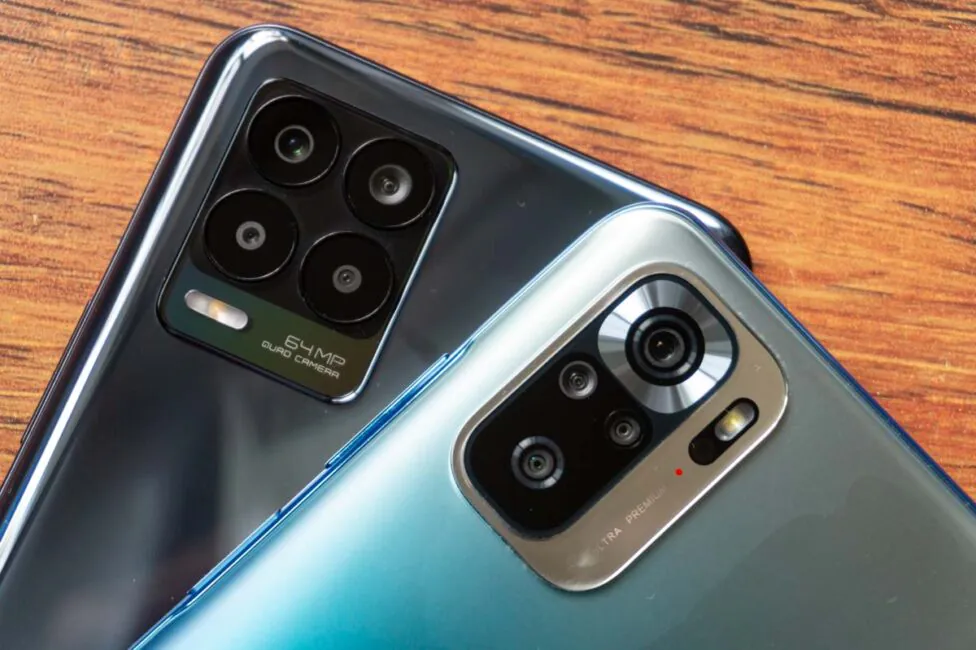
In terms of body materials, none of the smartphones pulls ahead. Glass is used only in front, the back plates in both cases are made of ordinary plastic, as, by the way, the edge around the perimeter. After all, we are dealing with inexpensive smartphones, so there is nothing surprising in this. But despite this, it is possible to highlight the IP53 standard in the Redmi Note 10S smartphone. Yes, this is not full-fledged protection as in some flagship, but it’s better than nothing.
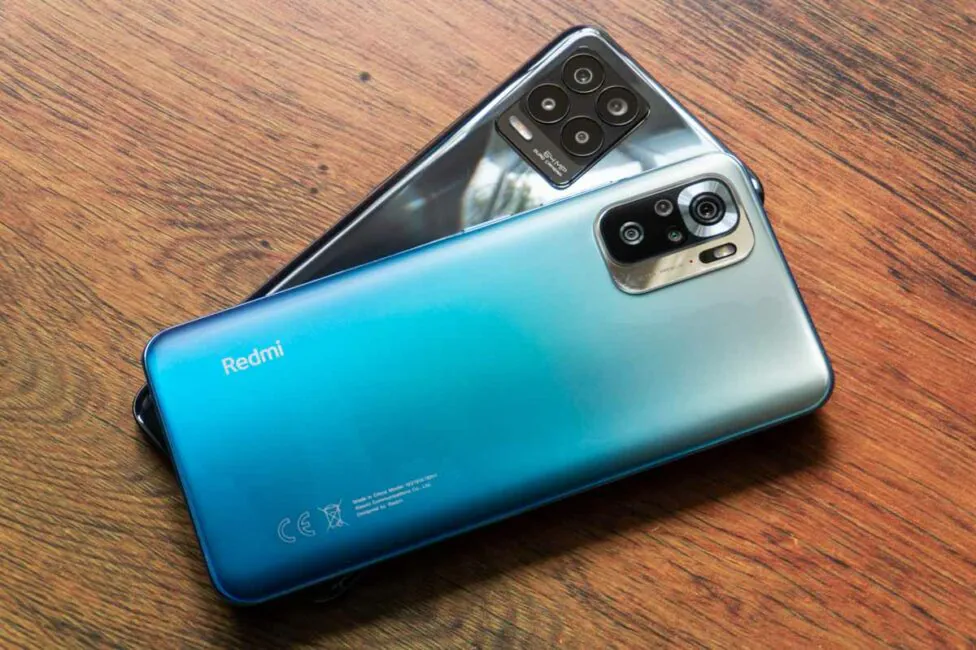
Now about the colors of the case. In some countries, the realme 8 is available in two colors: Cyber Silver and Punk Black. The differences between them lie not only in the silver and black shades, but also in the presence of a large vertical “Dare to Leap” inscription on the back of the iridescent strip (only in the silver realme 8). The Redmi Note 10S has no such features, just three colors: Ocean Blue with a light gradient at the top, plus Onyx Gray and Pebble White without gradients.
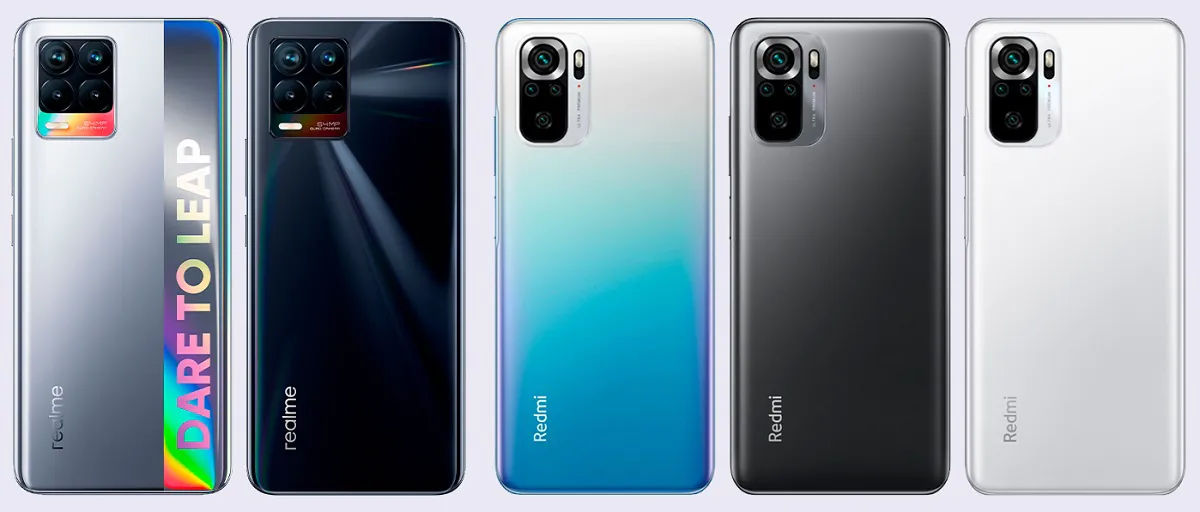
The layout of the elements is nothing unusual and most of them are even in the same places in smartphones. On the right are the power and volume buttons, on the left is a triple slot for two nanoSIM cards and a microSD memory card, below is a 3.5 mm audio jack, microphone, USB Type-C port and a multimedia speaker. But Redmi also has two additional ones on the upper edge: a second multimedia speaker and an infrared port for controlling household appliances.
Read also:
- Realme GT review: Track-Worthy Smartphone for the Masses
- realme 8 Pro vs Redmi Note 10 Pro — Mid-range smartphones head-to-head
Ergonomics
Smartphones practically do not differ in body dimensions and weight. So, the realme 8 has dimensions of 160.6 × 73.9 × 8.0 mm and weighs 177 g, and the Redmi Note 10S is 160.5 × 74.5 × 8.3 mm and weighs 178.8 g. Yes, what there are minimal differences, but in practice they do not play any role at all. They are equally not very easy to operate with one hand, because 6.4 “and 6.43” screens are hardly small. Overall, the usability is okay.
The physical control keys on the right side are located a little lower on realme and this, although small, is still a plus of the smartphone. There is absolutely no need to reach for them or touch them with your fingers, but the volume buttons on the Redmi Note 10S are too high, as for me. But there are no issues with the location of the fingerprint scanner, which is built right into the power key on the side. In the G8, a fingerprint scanner is built into the screen, but the platform is low and you will definitely have to get used to it.
Comparing the screens of the realme 8 and the Redmi Note 10S
In terms of characteristics, the displays of the realme 8 and the Redmi Note 10S are also very similar, and if there are any differences, then at least on paper they are minimal. Size 6.4″ in the realme 8 and 6.43″ in the Redmi Note 10S means they are almost identical, as we found out earlier. Manufacturing technologies of Super AMOLED and AMOLED matrices, respectively, also will not become a decisive factor for the user when choosing a device. The display resolution, aspect ratio and refresh rate are the same, and from the characteristics declared by the manufacturers, we can only note the peak brightness, which should be 100 nits more in Redmi. But on the realme side there is support for HDR10, which the competitor does not have, and a touch reading frequency of 180 Hz, which is not specified at all in the second.
| Smartphone | realme 8 | Redmi Note 10S |
| Display | 6,4″ | 6,43″ |
| Matrix type | Super AMOLED | АМОLED |
| Resolution | 2400×1080 pixels | 2400×1080 pixels |
| Pixel density | 411 ppi | 409 ppi |
| Aspect ratio | 20:9 | 20:9 |
| Peak brightness | 1000 nits | 1100 nits |
| Rate of update | 60 Hz | 60 Hz |
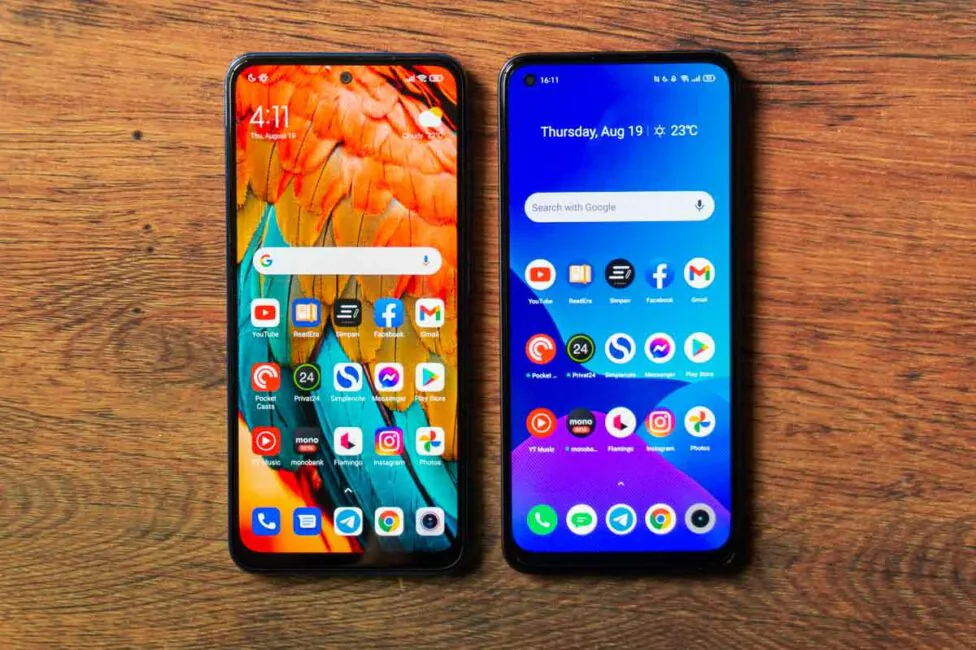
In fact, both displays are not bad on their own. Bright, contrasty, but with different default color temperature. It’s warmer in the Note 10S and cooler in the realme 8. It doesn’t really matter, because you can adjust the color tone in both cases. Regarding the screen saturation, it is worth clarifying that a lot depends on the selected color profile in the settings. If you choose the most saturated color display mode from those offered on two smartphones, then the picture of the Redmi Note 10S will turn out to be more juicy.
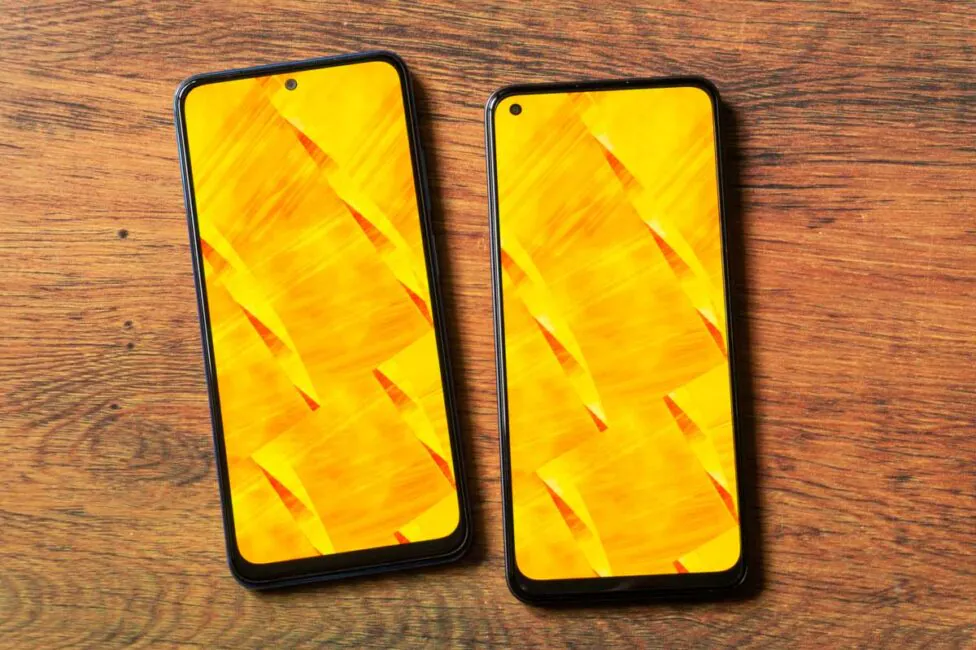
The maximum brightness is enough for both devices and you can use them outside on a sunny day without any problems. In direct comparison, the Redmi Note 10S has a slightly brighter screen, but the difference is not critical. If we talk about using in the dark, then in this case the realme 8 display will be more comfortable since its minimum brightness is lower. Viewing angles are traditionally wide, but as usual there is an issue with pink-green tints of white at certain angles.
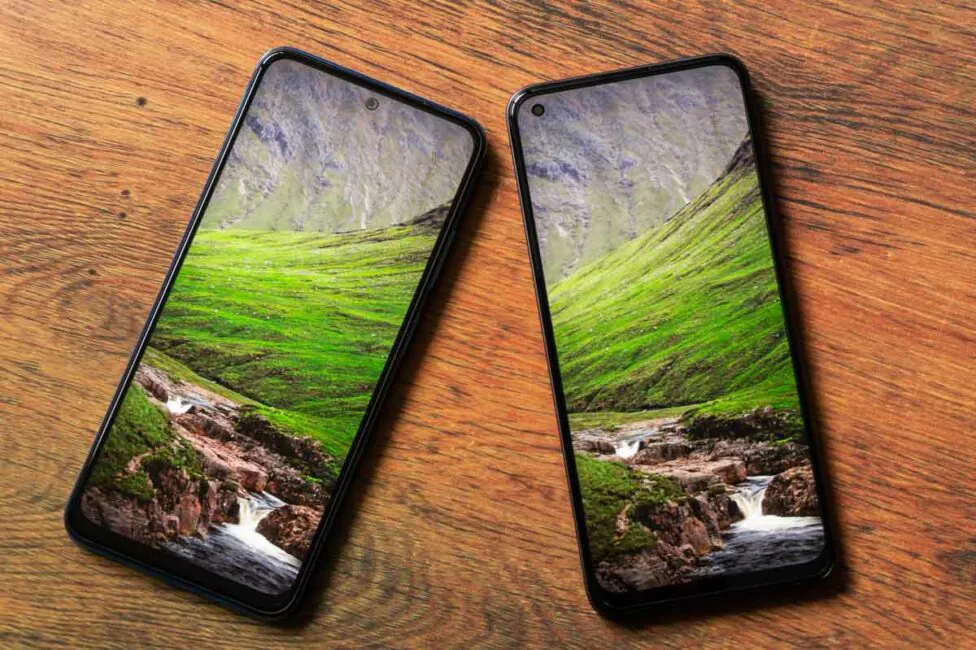
Since we are dealing with budget smartphones, none of them can boast a high refresh rate. So far, none of the manufacturers have managed to combine an AMOLED panel and an increased refresh rate in an inexpensive smartphone. But earlier, using the example of more expensive models, we found out that even the realme 8 Pro cannot boast of a 90 or 120 Hz display, so it would be wrong to expect something it in a more affordable model.
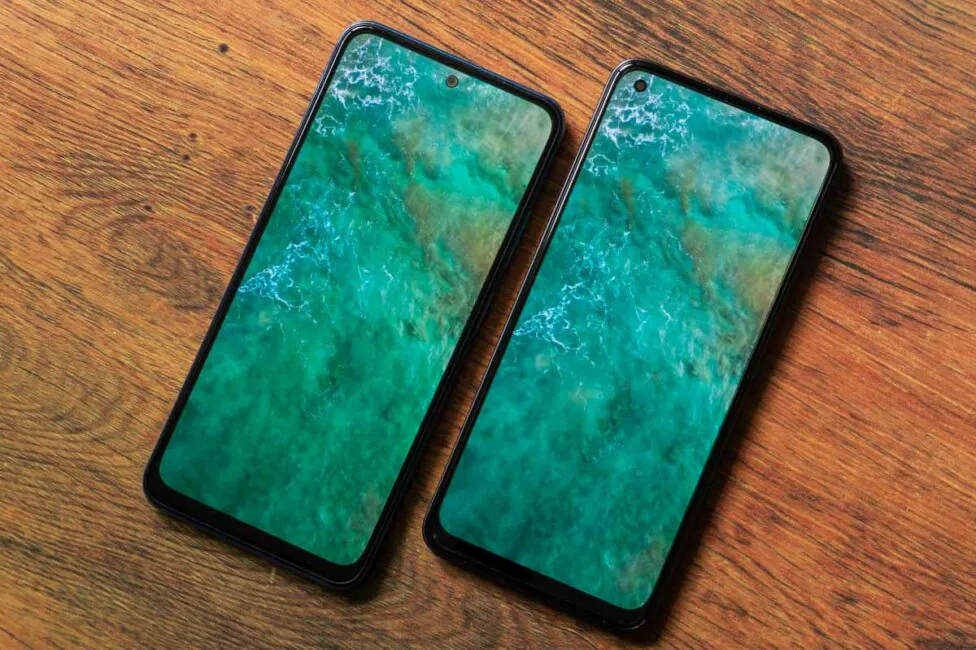
The set of display parameters is pretty standard and, with the exception of a few points, does not generally differ between the two devices. There are light/dark system themes, a reading mode (aka eye protection), three color display modes, the ability to manually adjust the color temperature and full-screen mode settings. In addition, there is DC dimming and Always On Display in both shells, however, the parameters are already different.
If in realme UI 2.0 there are no additional watch faces and you can only remove the display of the date, notifications or battery level, but in MIUI 12.5 there are many different watch faces with rich customization options. True, in Redmi, the clock on the off screen can only be displayed for 10 seconds after touching the display, while in the realme smartphone, the function can be active all day or work according to the schedule at the selected time.
Read also: Realme GT review: Track-Worthy Smartphone for the Masses
Performance of the realme 8 and the Redmi Note 10S
The realme 8 and Redmi Note 10S are based on the same chipset – the Mediatek Helio G95. The 12-nm platform includes 8 cores, which are divided into two clusters: a pair of high-performance Cortex-A76 cores operate at a maximum clock speed of up to 2.05 GHz, the other six Cortex-A55 cores with a clock speed of up to 2.0 GHz. A quad-core Mali-G76 MC4 is used as a video accelerator.
Judging by the results of testing smartphones in various tests, Helio G95 is better implemented in the realme 8. The Redmi Note 10S throttles and drops frequencies quite actively, which can be seen, for example, in the PCMark benchmark graph. Plus, according to the points scored, it is almost 18% more in favor of the G8, and this is a lot.
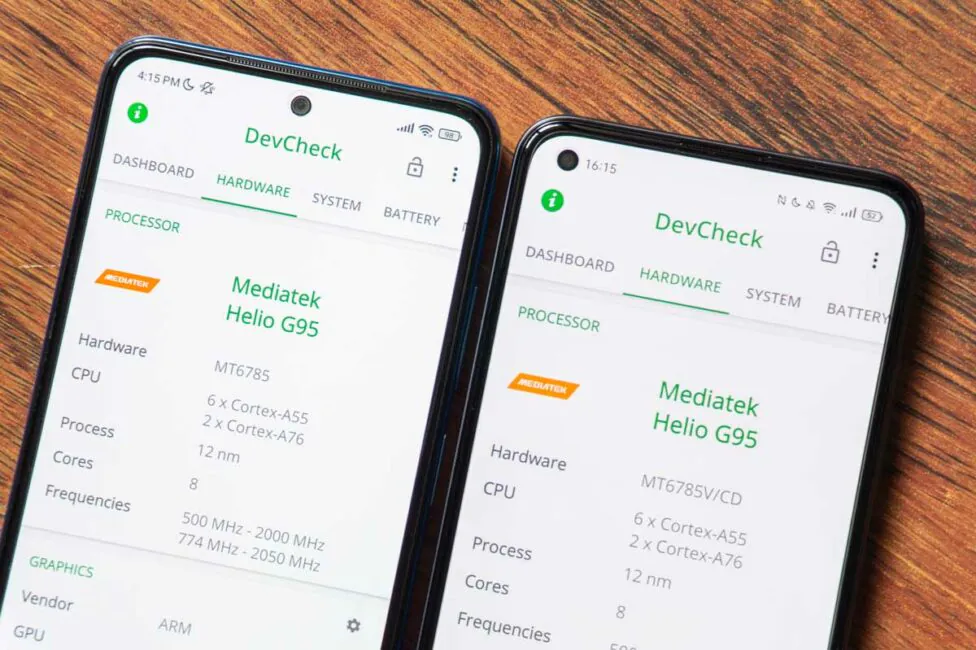
In the throttling test in 15 minutes the performance of processor cores in Redmi decreases by 32%, and in realme 8 by 23% of the maximum performance. Average and minimum performance values in GIPS are also higher with realme.
The amount of RAM in smartphones varies within the same limits. Depending on the version, it can be 4.6 or 8 GB of LPDDR4X type. In general, 6 GB might be the best option for devices of this level. More is unlikely to be needed anytime soon.
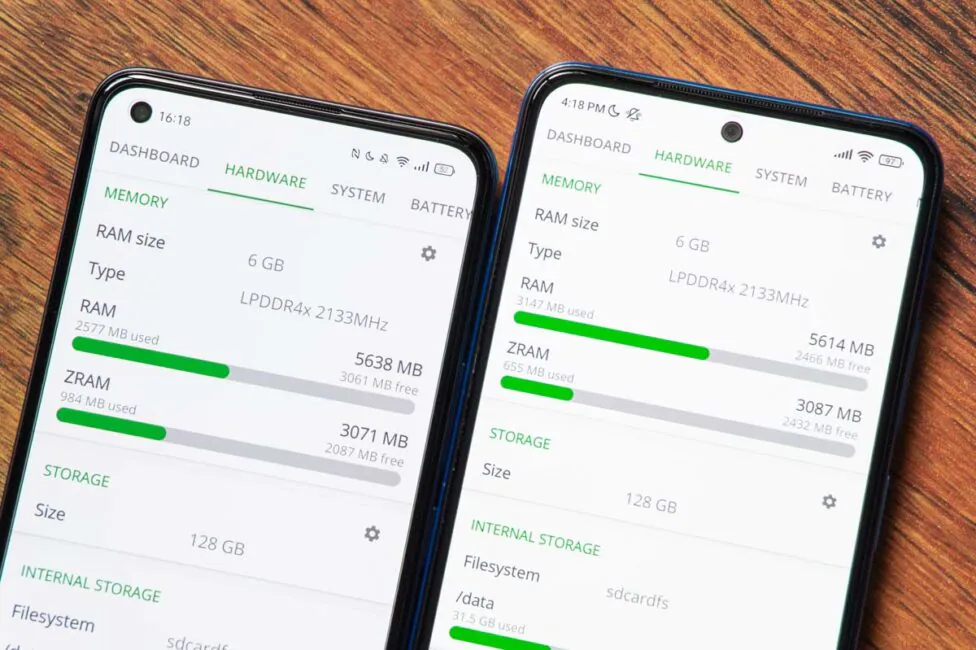
There can be either 64 GB or 128 GB of storage. But the type is different and in Redmi it is slightly faster, UFS 2.2, while realme uses a UFS 2.1 drive. Out of 128 GB, 108.1 GB are allocated for the needs of the user in the realme 8 and 108.31 GB in the Note 10S. There is a slot for a microSD memory card in each, cards up to 256 GB are supported and you will not have to sacrifice a SIM card to expand storage.
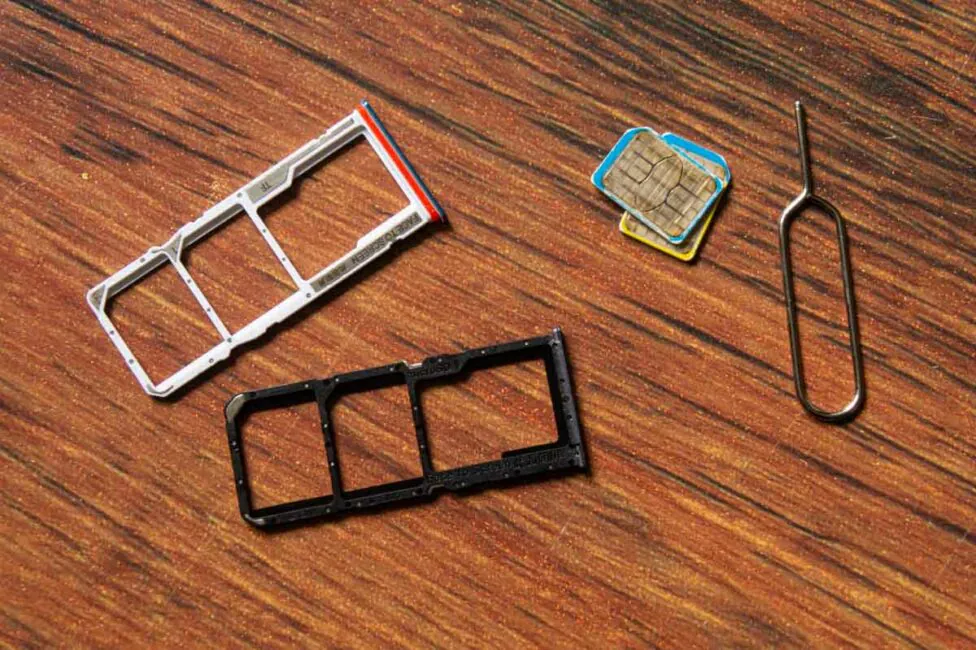
Smartphones run quite well, the UI is smooth and does not slow down. Games are fine too, especially those on the casual side. Relatively demanding ones work fine mainly on medium/high settings. But not always, and Genshin Impact on low graphics runs at 21-22 FPS. With PUBG Mobile, the situation is remarkable in that the maximum frame rate for the Redmi Note 10S is limited to 40 FPS, while on the realme 8 is limited to 30 FPS. Why this is so is unclear, the hardware is the same.
| Game and settings |
realme 8 | Redmi Note 10S |
|
Call of Duty: Mobile (very high, all effects are active except for rays) |
45 | 45 |
|
Genshin Impact (low, 60 fps) |
21 | 22 |
|
PUBG Mobile (high, anti-aliasing and shadows are on) |
30 | 40 |
|
Shadowgun Legends (high, 60 fps) |
52 | 49 |
Cameras
There are four modules in the main unit of smartphones cameras: the main wide-angle, the additional ultra-wide-angle, modules for shooting macro and a depth sensor. The set itself is quite standard and the modules hardly differ in their characteristics.
| Smartphone | realme 8 | Redmi Note 10S |
| Wide-angle module | 64 Mp, f/1.8, 1/1.73″, 0.8µm, PDAF | 64 Mp, f/1.8, 1/1.97″, 0.7µm, PDAF |
| Ultra-wide-angle module | 8 Mp, f/2.3, 119˚, 1/4.0″, 1.12µm | 8 Mp, f/2.2, 118˚, 1/4.0″, 1.12µm |
| Macro module | 2 Mp, f/2.4 | 2 Mp, f/2.4 |
| Depth module | 2 Mp, f/2.4 | 2 Mp, f/2.4 |
As usual, the standard resolution of images for the main module is 16 megapixels, but if you wish, you can take a photo in 64 megapixels – the corresponding shooting mode is available in both smartphones. It makes sense to use full resolution, but only in some situations. For example, for taking pictures of landscapes in excellent lighting conditions. For evening shooting, full resolution is not suitable, but during the day you can get more detailed pictures.
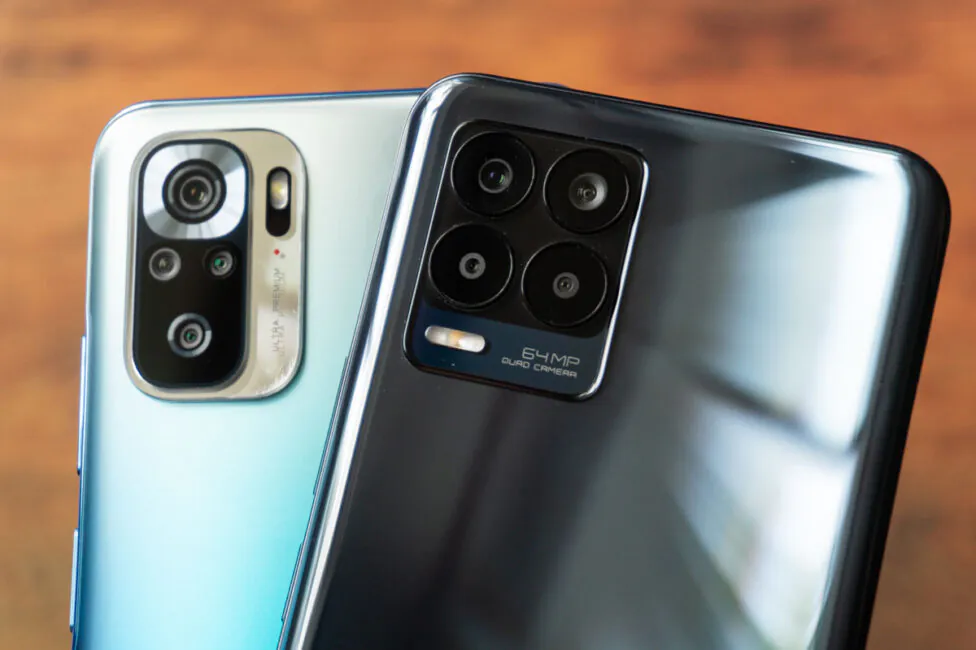
All of the photos below were taken in automatic shooting mode, with HDR turned off and without the use of AI. Originals in full resolution can be found on Google Drive, photos from the realme 8 have titles like IMGXXXXXXXXXXXXXX, while Redmi Note 10S has titles like IMG_XXXXXXXX_XXXXXX.
In the first pair of shots, the difference in white balance is apparent. As is the case with older models, realme traditionally takes “colder” shots, while in the photos taken on Redmi, “warm” tones prevail. But realme did a little better with the sky, but the detail is about the same.
In general, the same can be said about the next couple of photos – they differ only in colors. Plus the saturation is higher with the realme phone, which makes the photo look less natural, but some people like such pictures even more.
The following example was filmed with medium indoor lighting. A slight greenish tint can be seen in the photo taken from the realme, but it is brighter and lighter, without obvious digital noise. But Redmi struggles: the pic is quite dark and at the same time more “noisy”, which is somehow illogical.
Next is a scene that is rather difficult for many smartphones, with a rich yellow background and a dark subject. On automatic settings, the Redmi Note 10S does not cope with such conditions at all, no matter what angle I choose. The background is pale, the smartphone in the photo is unnaturally blue, and the picture does not offer any details. At the same time, the realme 8 shows excellent color reproduction, as well as higher clarity.
With the portrait mode the situation extremely ambiguous. On the one hand, the Note 10S does a better job of blurring. There is a clear separation of the hand from the background, but the picture came out with a kind of greenish tint. On the example with the realme 8, there is a kind of more elaborate background, but the watch turned out to be somehow too dark, not to mention the weak blur, which selectively affected the skin.
Now – a couple of examples in full 64 megapixel resolution. On the first pair, realme 8 did a better job with exposure, but as for me, it overdid it with the saturation of green, which is clearly visible on the tree on the left. In this case, I manually focused on the near trunk of the tree (on the right), but the Realme left the whole scene in sharp focus and this is not bad even though the idea was different. As for the Redmi Note 10S, it focused exactly on that one tree, so the rest of the objects in the distance were blurred.
Indoors, with 64 megapixels, the Redmi Note 10S correctly reproduced the colors and had slightly better detail in the picture, while the picture from realme acquired an unnatural green tint and turned out to be less sharp in general.
In the evening, in automatic mode, smartphones offer different colors. The detail is just a little better in the photo from the realme 8, but there are also some light halos around the tree branches – it doesn’t look very natural. In the photo from the Note 10S, there is no such problem, but as I have already noted, it is inferior in detail and, moreover, there is a little more digital noise.
In night mode, I like photos from realme better, but they are not perfect either. In the example below, the picture is lighter from realme, but the foliage of the trees is very dark and, in fact, does not contain any information. The photo from Redmi is worse in detail, more “noisy” and with a kind of reddish tint, but you can see something in the shadows.
The ultra-wide modules in both cases are not great and in general, in terms of dynamic range and detail, they are extremely similar. The difference between daytime shots can be seen only in the white balance and color rendition. Below, in a few examples, it is noticeable that the pictures from the realme 8 have a pronounced “coldish” tint, while the Redmi Note 10S is exactly the opposite – it makes the pictures “warmer”.
The evening shots from ultra-wide-angle modules show the same picture with different white balance. The shot from realme 8 turned out better at least in terms of detail. On Redmi, there is clearly less detail and what it is connected with is not clear, but the picture is more or less bright. And this is an automatic mode, by the way, although realme is able to photograph at night and from the ultra-wide-angle module.
You shouldn’t expect anything special from the macro cameras of smartphones – they do their job and that’s about it. Alas, too low a resolution of 2 megapixels does not allow them to be used seriously. But at the same time they shoot in different ways: on the realme 8 they are not as pale and are sharper in general, which is important, and on Redmi they are kind of blurry even in good lighting. The examples below clearly illustrate this.
Smartphones can record video on the main cameras in a maximum resolution of 4K at 30 FPS or 1080P with 30/60 FPS at the user’s discretion. There is no electronic stabilization in the Redmi Note 10S at all, in the realme 8 it can be turned on, but I would not do that. The fact is that with active stabilization the viewing angle becomes extremely limited, as if you were shooting with a double zoom. Below, both video examples are shot in equal conditions, without stabilization.
realme 8:

Redmi Note 10S:

You can shoot with ultra-wide-angle modules at a maximum resolution of 1080P at 30 FPS in both cases. Interestingly, there is electronic stabilization for the ultra-wide-angle in the Redmi Note 10S. The viewing angle because of this is less than that of the realme 8 smartphone without electronic stabilization. Which is better, a wider angle without stabilization or less wide angle with stabilization, you can decide for yourself.
realme 8:

Redmi Note 10S:

The front-facing camera in the realme 8 is 16 megapixels (f/2.5, 1/3.0″, 1.0µm), in the Redmi Note 10S it is 13 megapixels (f/2.5, 1/3.06″, 1.12µm). The viewing angle is similar, but the picture quality is better on realme. Photos are more detailed and color reproduction is more natural, on Redmi, in turn, photos sometimes turn out to be too contrasting, not to mention fewer details. Video on the front-facing camera is recorded in a maximum resolution of 1080P with 30 FPS, and realme does it better: there’s higher detail and no rolling shutter. On Redmi, sharp turns of the camera produce fuzzy picture.
Camera apps generally offer the same set of shooting modes, and in addition to standard stills and videos, there is a manual mode in which you can save images in RAW format. Night mode is also available on smartphones, but if Redmi can shoot only from the main module, then realme allows you to use the ultra-wide-angle one as well.
There is a portrait mode with background blur, panoramas, document shooting mode and several video modes. On Redmi, you can also shoot videos with different effects, and on realme, you can record simultaneously on the front and main cameras.
Read also: Xiaomi Mi 11i review: the most affordable flagship on Snapdragon 888
Unlocking
The fingerprint scanner in the realme 8 is located directly in the screen. The technology is relevant and was previously used only in Pro versions of realme smartphones. It is commendable that it migrated to more affordable models. It is placed lower than we would like, but there are no issues with its work. If you get used to it, it’s fine, but in terms of speed it will be slightly slower than a conventional capacitive fingerprint scanner.
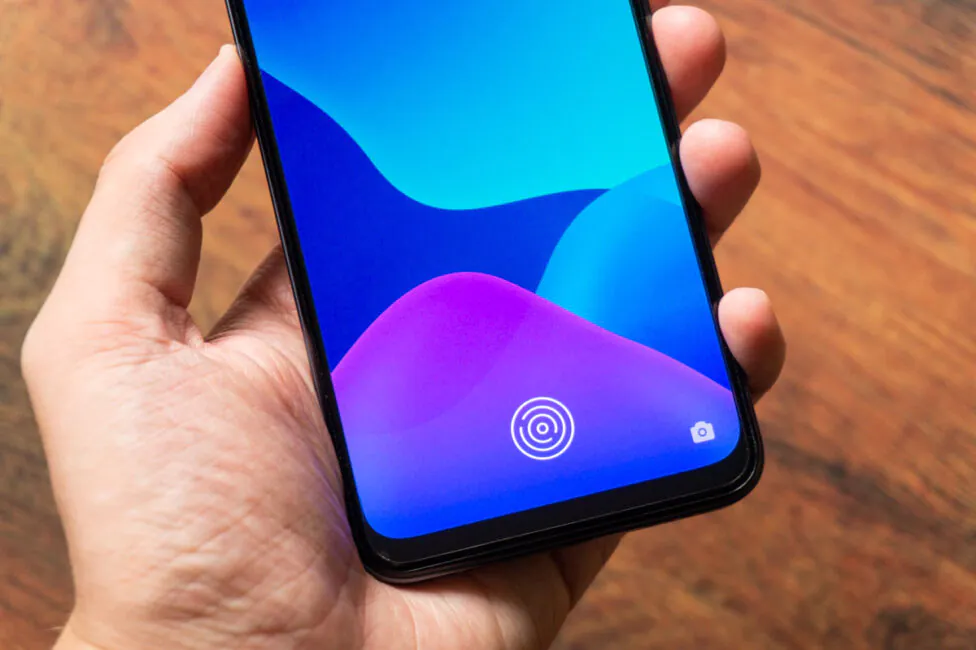
It is the latter that is used in the Redmi Note 10S. It is located in a better place – on the side of the power button. In terms of speed and stability, it turned out to be better than the scanner in the realme 8. It works flawlessly and the smartphone is unlocked as soon as the finger is on the button. Moreover, there are two recognition methods to choose from: by touching or by pressing. The first does not require a physical press of a button, but there may be accidental unlocks when the locked smartphone is in your hand. The second method eliminates such situations, because the button must first be pressed, and not only touched.
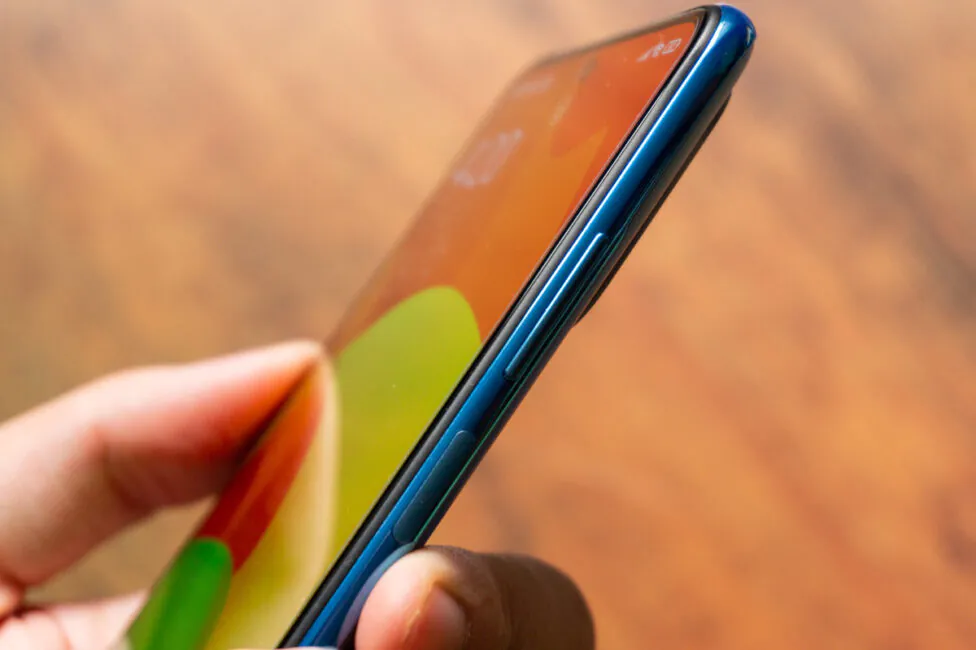
There are no other settings for the Redmi Note 10S scanner, but realme 8 boasts the ability to choose one of eight unlock animations on the screen and launch an app when a certain fingerprint is applied.
Both smartphones also have face unlocking, and the method is implemented using front-facing cameras. It works pretty fast on both realme and Redmi. However, due to the different unlocking animations, it seems that on realme 8 unlocking is a fraction of a second faster. Both smartphones recognize the owner if there is lighting around. But in complete darkness, Redmi cannot be unlocked with a face, unlike the realme 8.
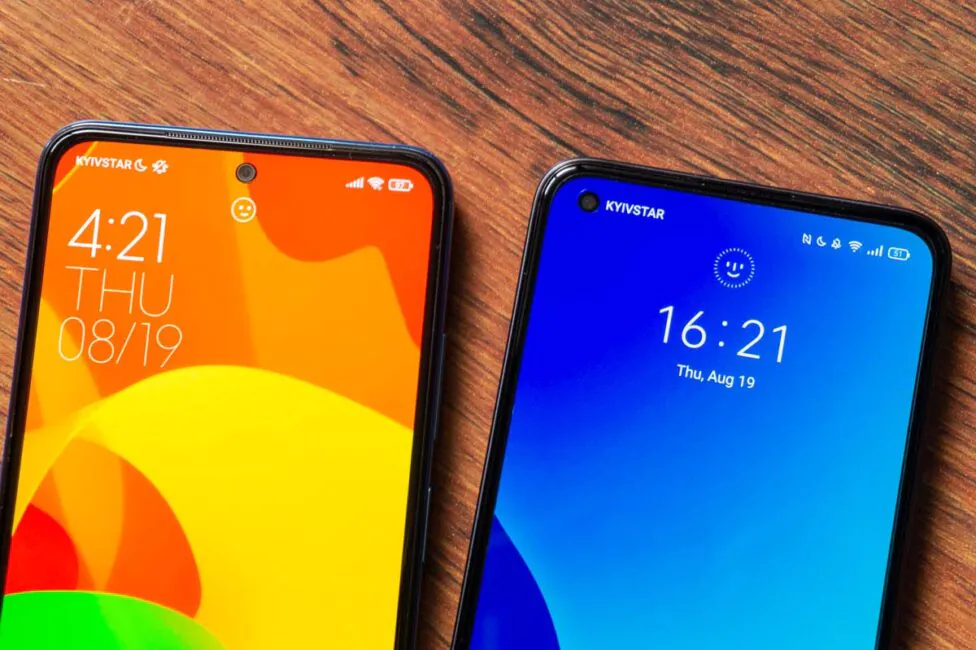
The latter has the option of increasing the brightness of the display in low light, thanks to which the face is additionally highlighted. When the screen is turned on, a special window with a white background is launched. Such a backlight is enough for the method to work in any light.
Read also: Xiaomi Mi 11 Lite review: an imposter?
Battery life
Batteries in devices are the same, 5000 mAh. Considering that the displays are practically the same in size and the platform does not differ at all, one can deduce that the battery life won’t be different as well.
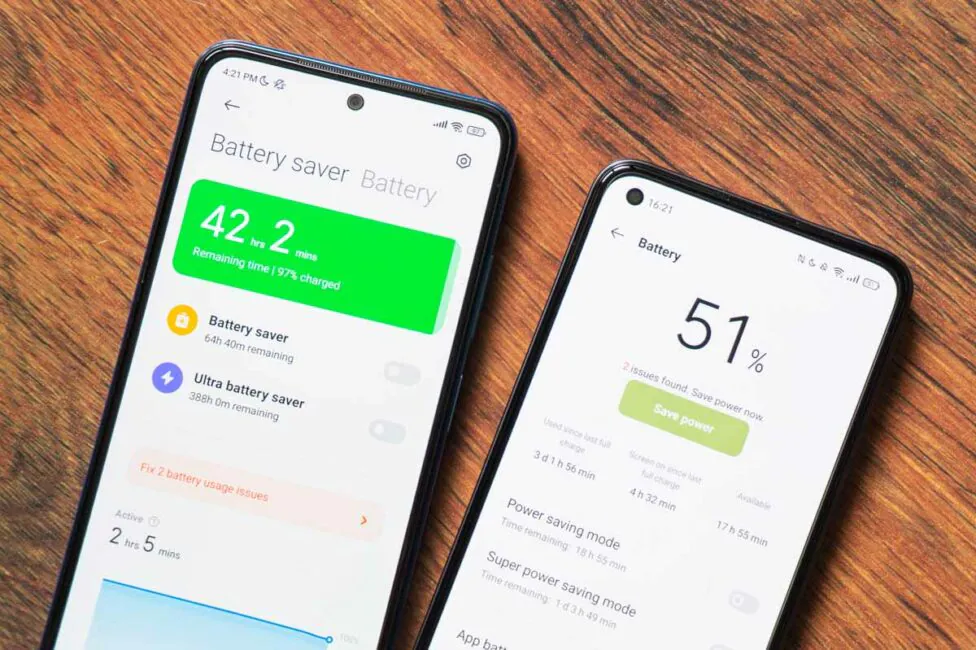
To test the battery life, the same methods were used as in the previous comparison. I am talking streaming video for 30 minutes with maximum display brightness, 30 minutes in Shadowgun Legends with the same maximum backlight brightness and the traditional Work 3.0 test from the PCMark benchmark, also at maximum brightness.
In half an hour of watching the video, realme 8 was discharged by 3%, Redmi Note 10S – by 4%. In Shadowgun Legends, the first smartphone lost 11%, the second lost 12%. In PCMark Work 3.0 realme lasted 8 hours and 37 minutes, which is quite good, but the Redmi also keeps up with it, showing a result of 8 hours and 23 minutes. In general, the battery life of both smartphones is very good. They will be enough for one and a half to two days of moderate use.
With charging, the situation is interesting. On paper, the Redmi Note 10S should charge a little faster, because it comes with a 33W charger, while with the realme 8 comes with a 30W adapter. The difference is small, but nevertheless. What’s in practice? But in practice, it is the realme 8 that charges faster, and the difference is quite noticeable. It takes only one hour to charge realme from 15% to 100%, while the Redmi Note 10S takes an hour and a half to charge.
| Smartphone | realme 8 | Redmi Note 10S |
| 00:00 | 15% | 15% |
| 00:10 | 35% | 29% |
| 00:20 | 54% | 40% |
| 00:30 | 71% | 47% |
| 00:40 | 86% | 58% |
| 00:50 | 95% | 71% |
| 01:00 | 100% | 83% |
| 01:10 | 92% | |
| 01:20 | 98% | |
| 01:30 | 100% |
Sound and wireless modules
With the sound, the situation is very similar to that observed in the Pro-versions of smartphones from the previous comparison. That is, the parity of earpiece speakers, however the multimedia speaker is better in the smartphone from Xiaomi. The reason for this is simple and understandable: there are two full-fledged ones in the Redmi Note 10S on the bottom and top edges. That is, they form a full-fledged stereo pair and offer more detailed sound. At the same time, I would not say that they sound louder than the only speaker in the realme 8. The volume level is about the same, but mono is mono and you want to listen to music or play games more on the Redmi Note 10S. The realme smartphone sounds flat and inexpressive.

The wireless modules are identical: smartphones work with 4G networks, both support dual-band Wi-Fi 5, there is also current Bluetooth 5.1 (A2DP, LE) and GPS (A-GPS) with GLONASS, BDS on board. Both also have an NFC module for contactless payments. True, the Redmi Note 10S additionally supports the GALILEO navigation system and I remind you that there is traditionally an IrDA on its upper edge, thanks to which you can control household appliances using a smartphone.
Read also:
- Xiaomi Mi 11i review: the most affordable flagship on Snapdragon 888
- Xiaomi Mi 11 Ultra review: Powerful Flagship to Shut Up the Skeptics
Firmware and shells
The realme 8 and the Redmi Note 10S firmware are based on the current version of Android 11, but received different proprietary shells – realme UI 2.0 and MIUI 12.5, respectively. Each of them is interesting in its own way, and despite strong design differences, their functionality overlaps in places.
There are two methods of system navigation with buttons and gestures, a touch assistant (a floating button with selected shortcuts), various gestures and actions, as well as extensive means of personalizing the appearance. Nothing bad can be said about either shells, both are identical.
Verdict
The miracle did not happen and it was quite expected that, as a result, smartphones from the same segment will be very, very similar in many key parameters. So it’s impossible to immediately answer the question of which smartphone is better. The realme 8 and the Redmi Note 10S have similar displays, the same performance and battery life, and an identical set of cameras. However, the whole point lies in the little things and from them you can figure out which device is better.
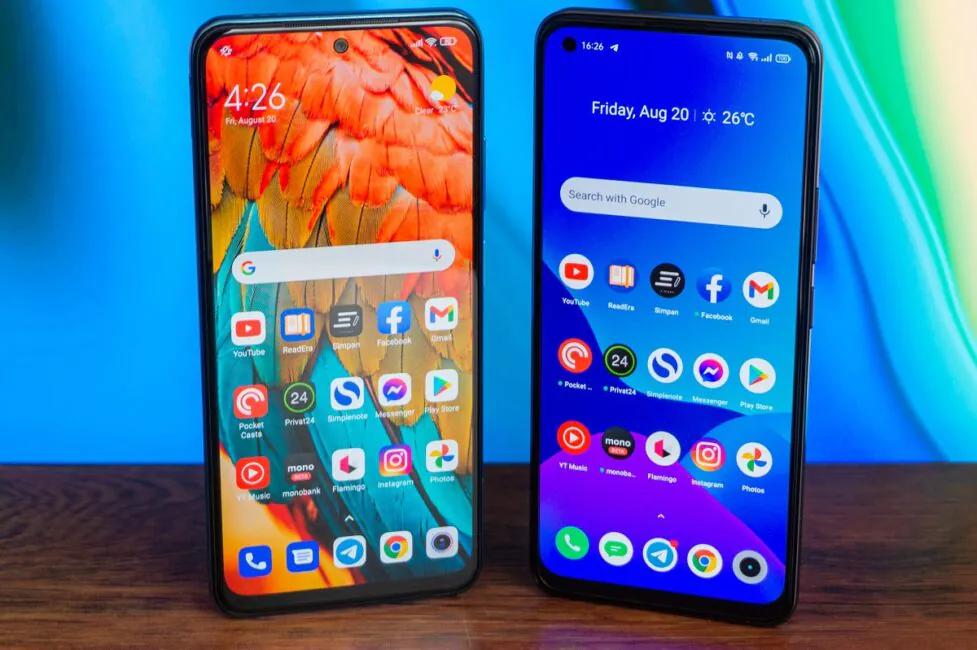
In terms of design and overall body, I would have preferred the Redmi Note 10S. More practical cover, IP53. The realme 8, on the other hand, has impractical materials, which you want to hide in a case as soon as possible. The fingerprint scanner in the latter is made using more modern technology and this is commendable, but in terms of speed and stability, it is slightly worse than the usual capacitive fingerprint scanner in the Redmi Note 10S.
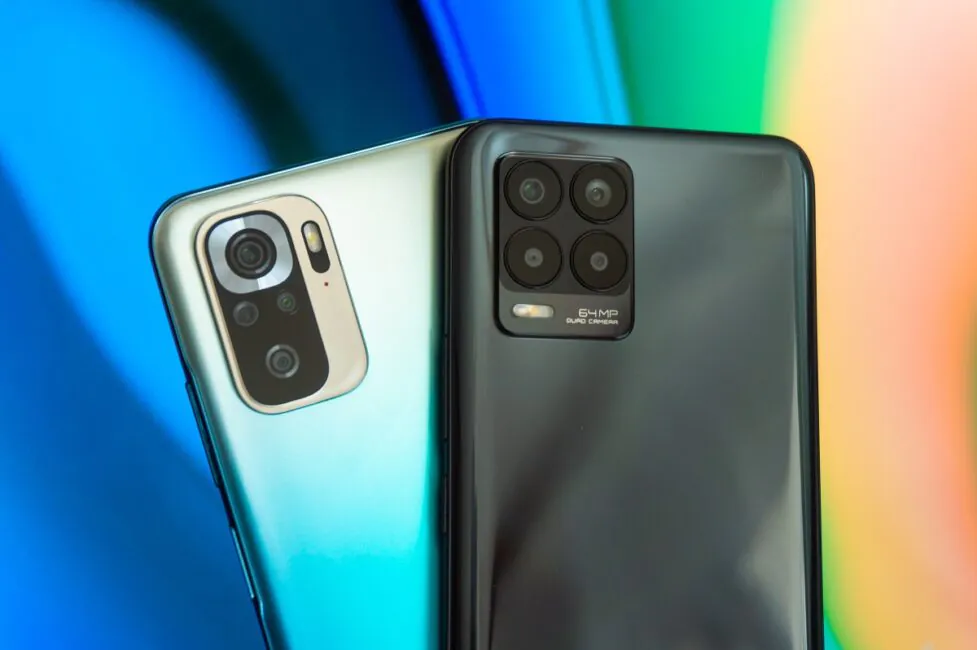
But the Helio G95 chipset is better implemented in realme. Yes, you won’t notice this in daily use, but users who care about games should pay attention to the realme 8. Although cameras in smartphones are similar in characteristics, the results in most situations, albeit not much, are better when it comes to realme. In addition, it charges faster, but the Redmi Note 10S is in the lead in terms of sound – stereo speakers sound better and there is nothing you can do about it.
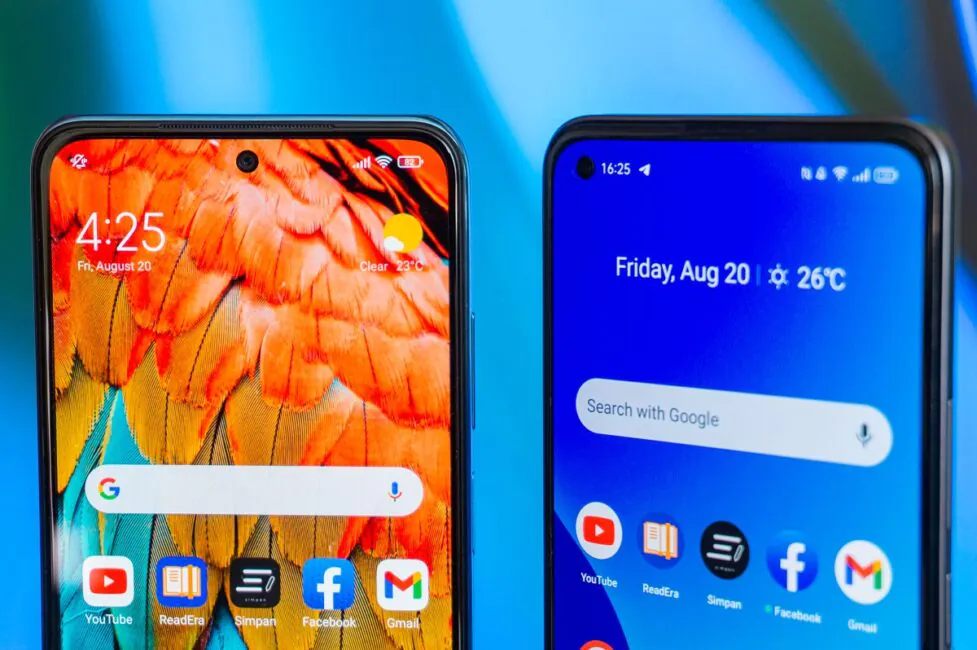
Read also:
- Realme Buds Air 2 Neo review: Inexpensive quality TWS earphones with ANC are a thing now?
- The differences and similarities between iPhone 12, 12 Pro, 12 Pro Max, and 12 mini. How to choose a new iPhone
- Blackview AirBuds 5 Pro Review: TWS earbuds with flagship features and bad controls
Subscribe to our accounts:


